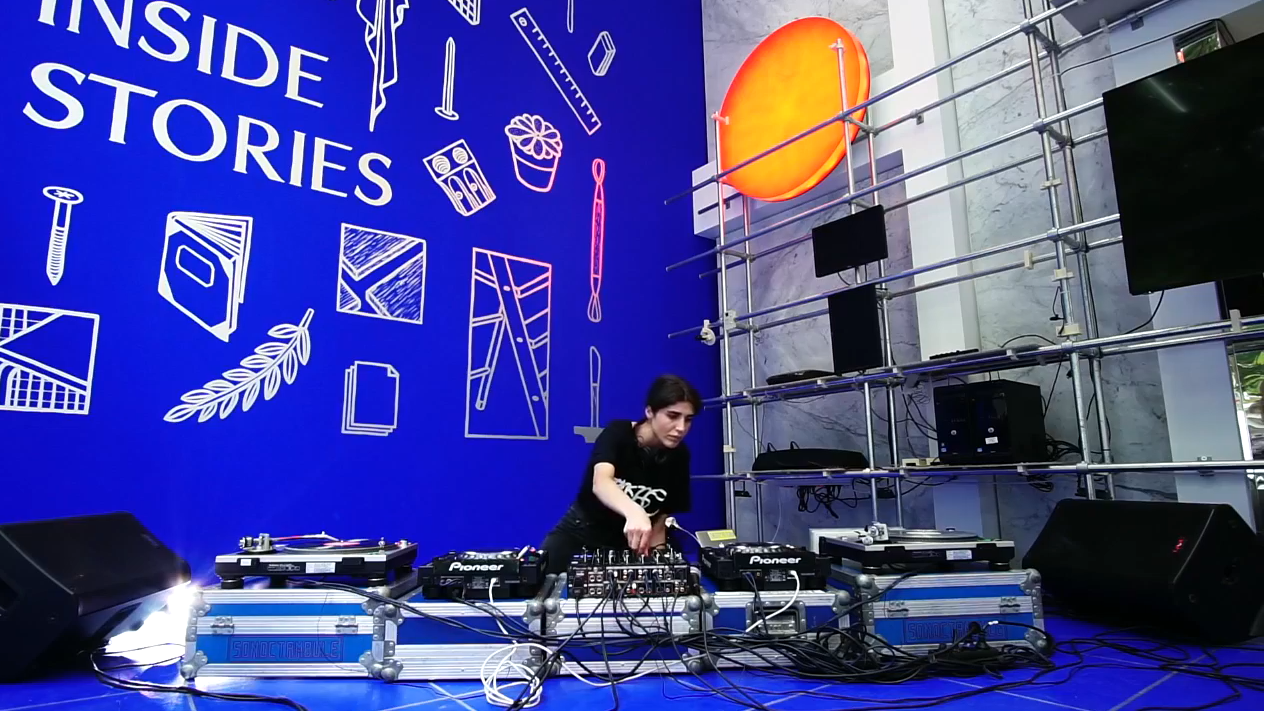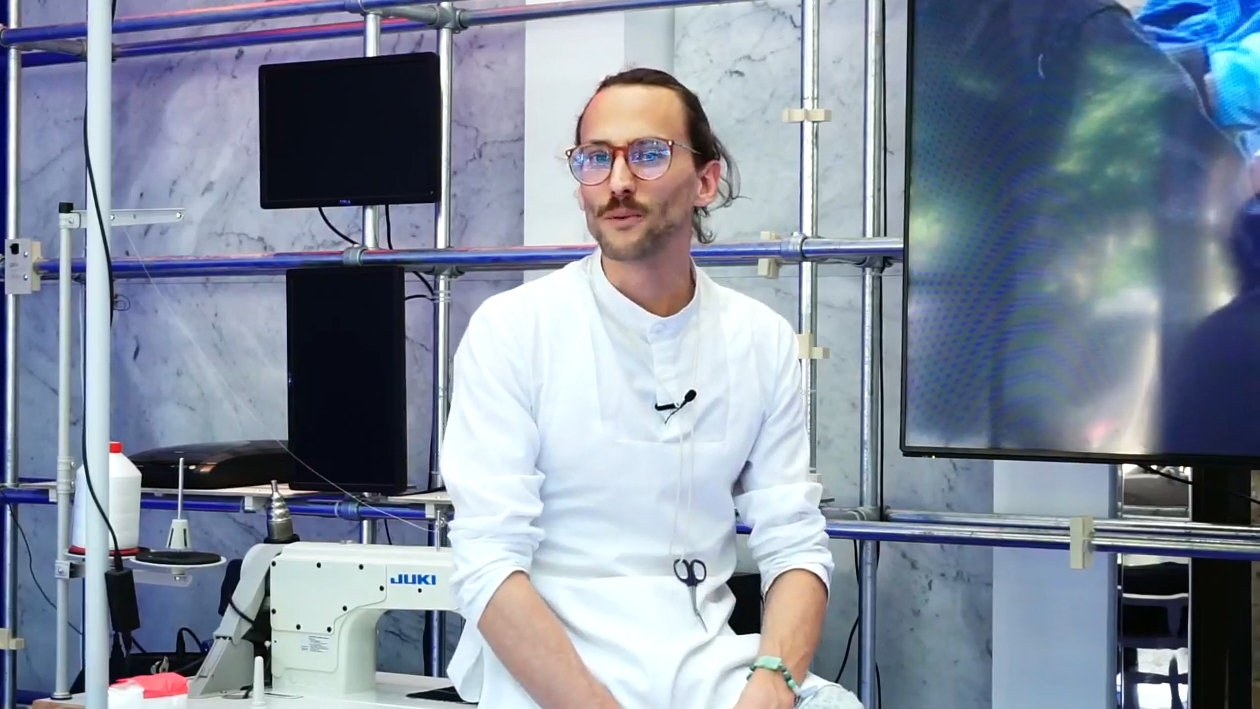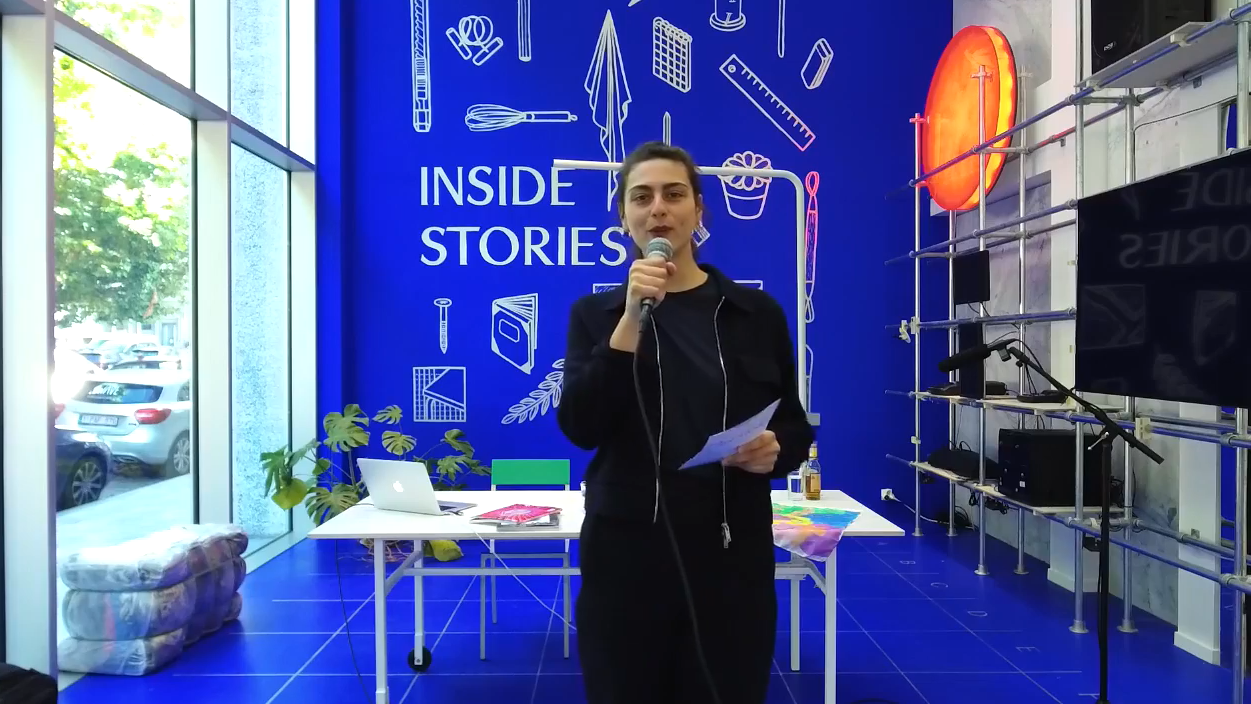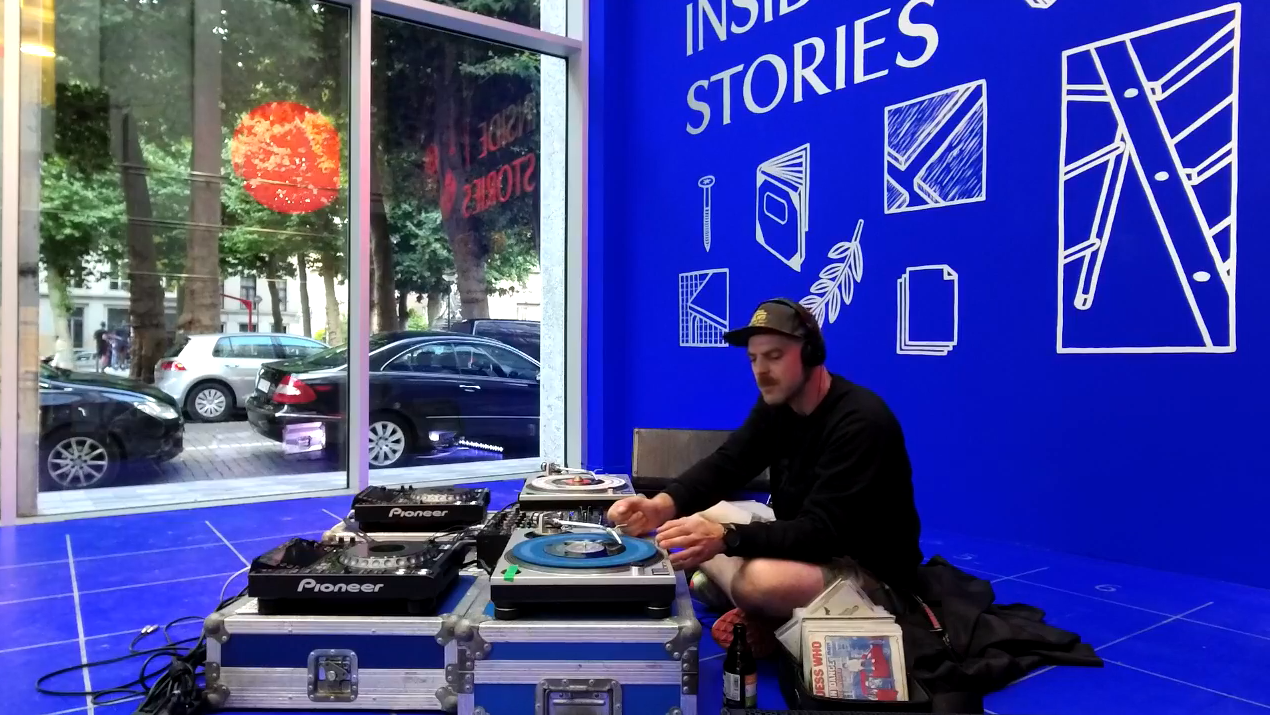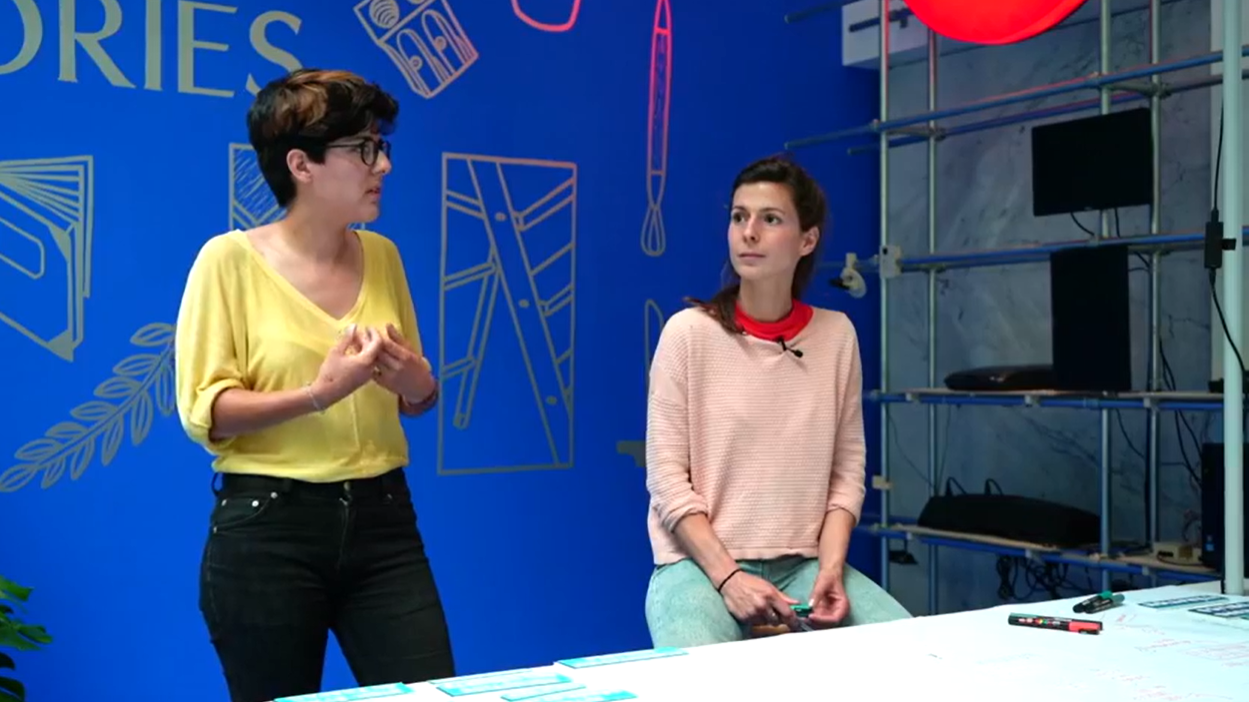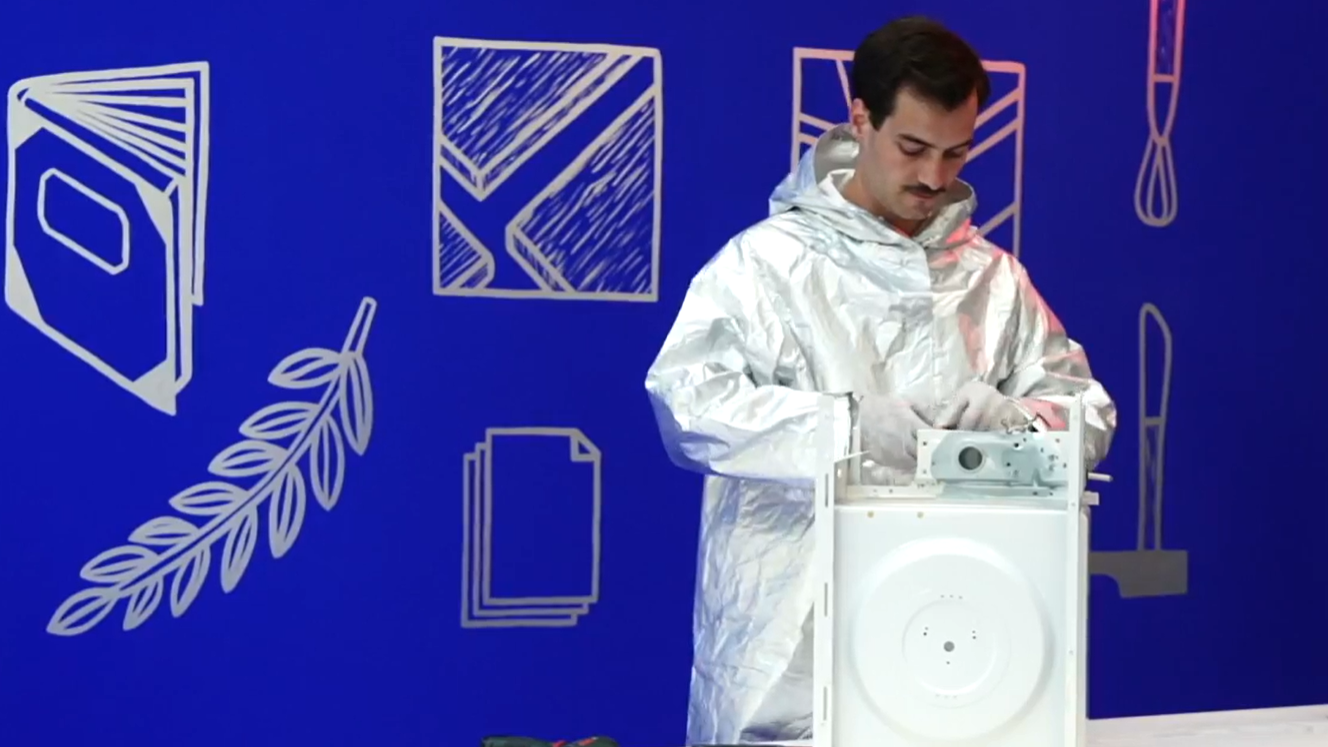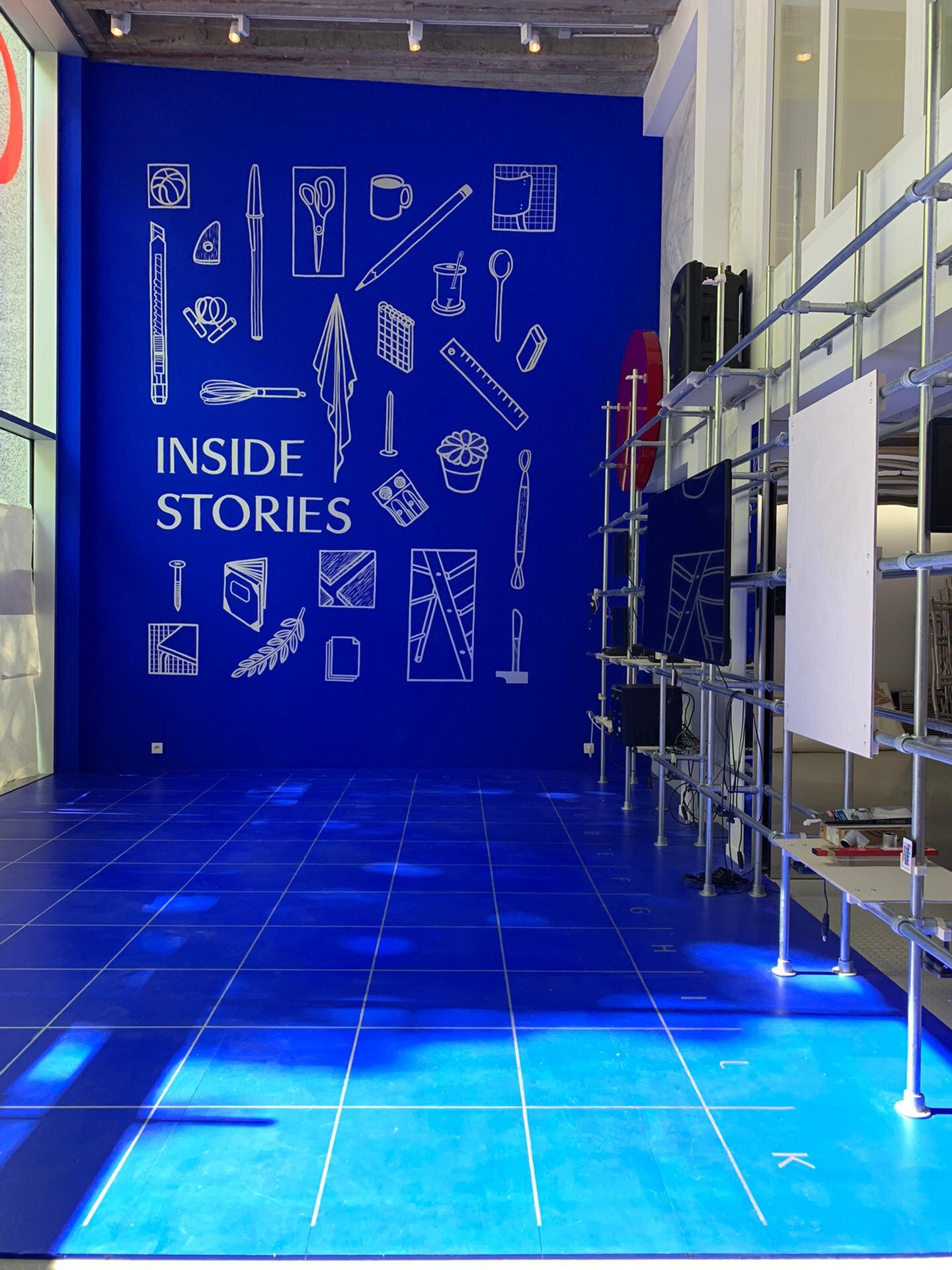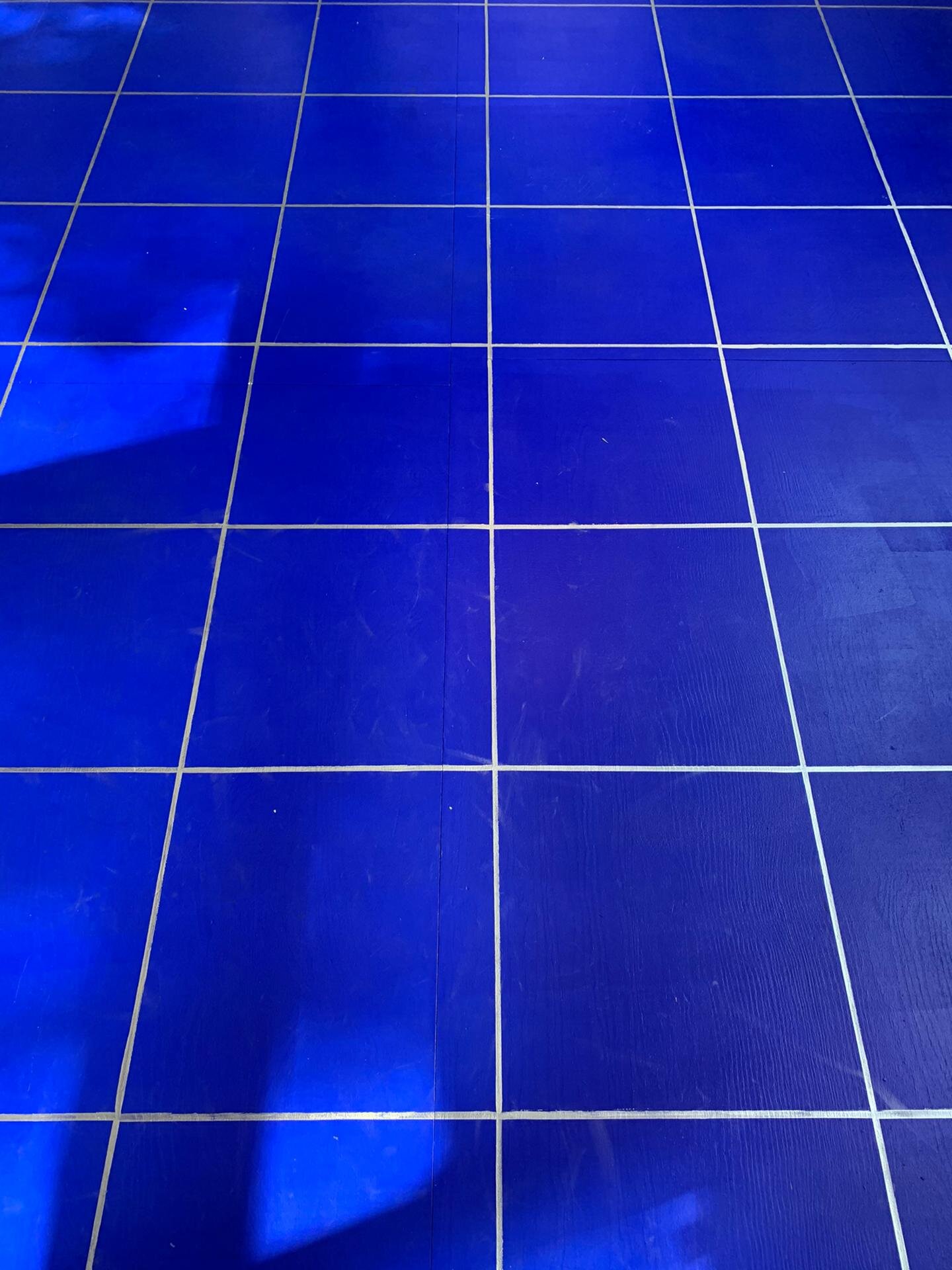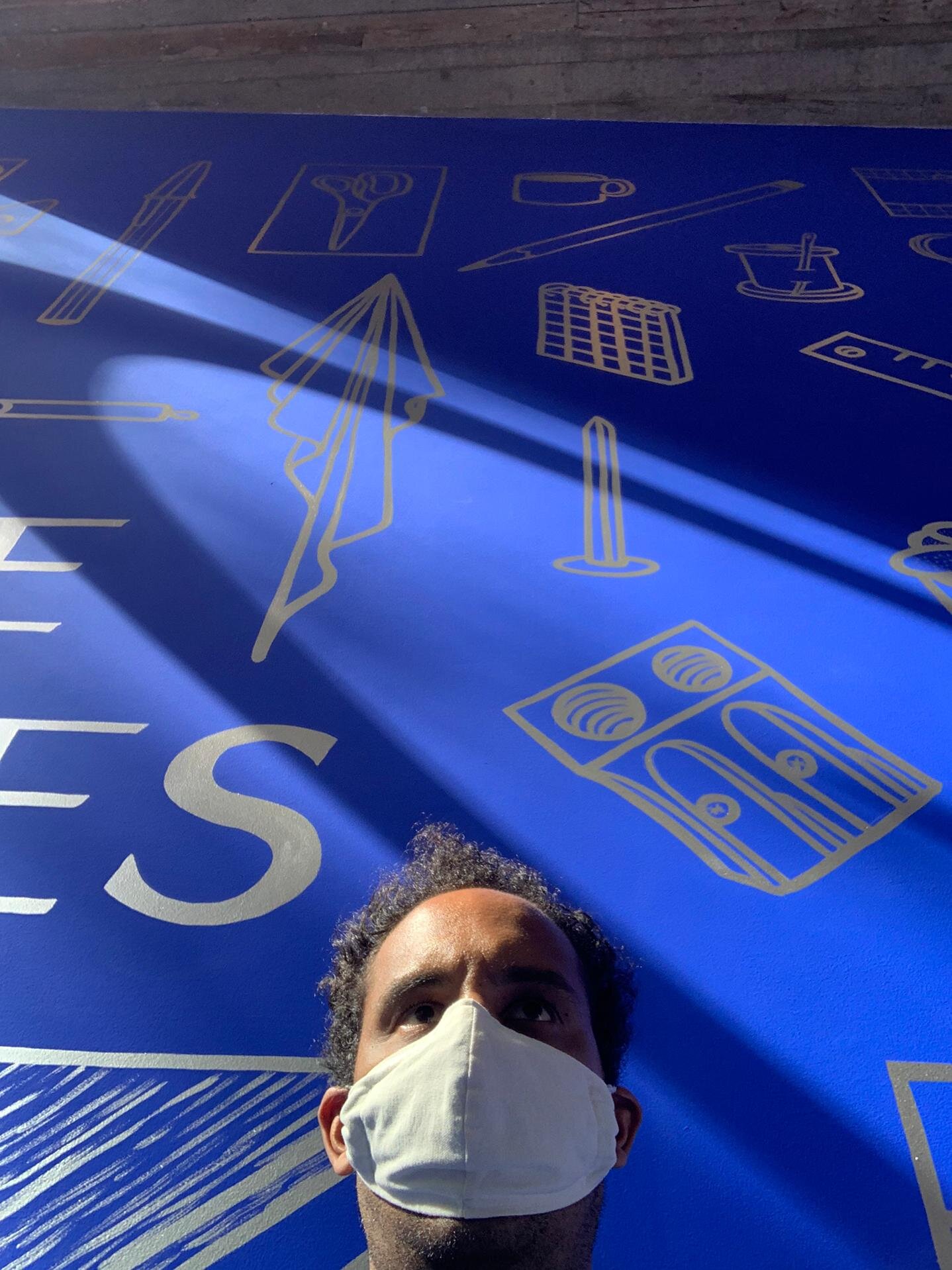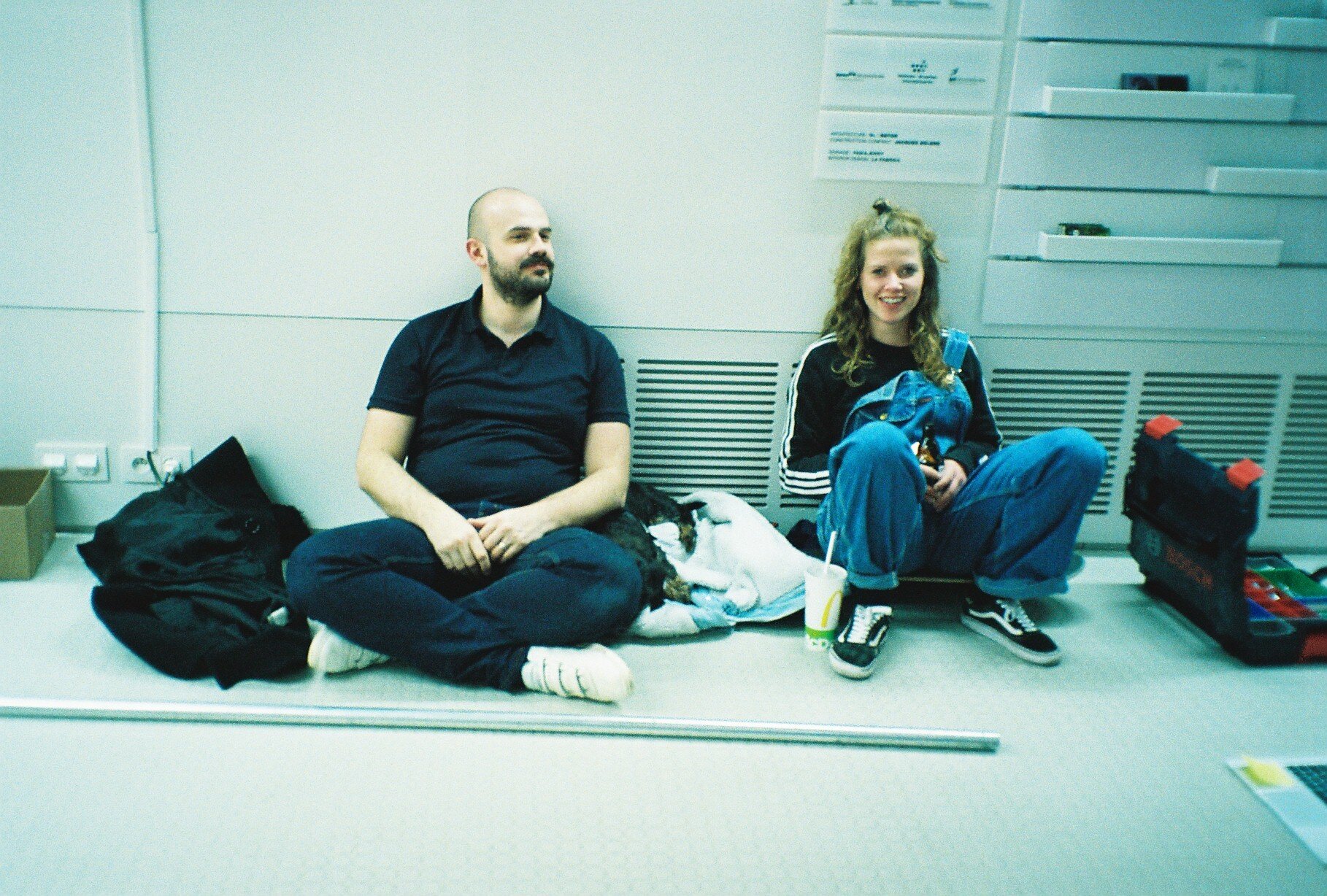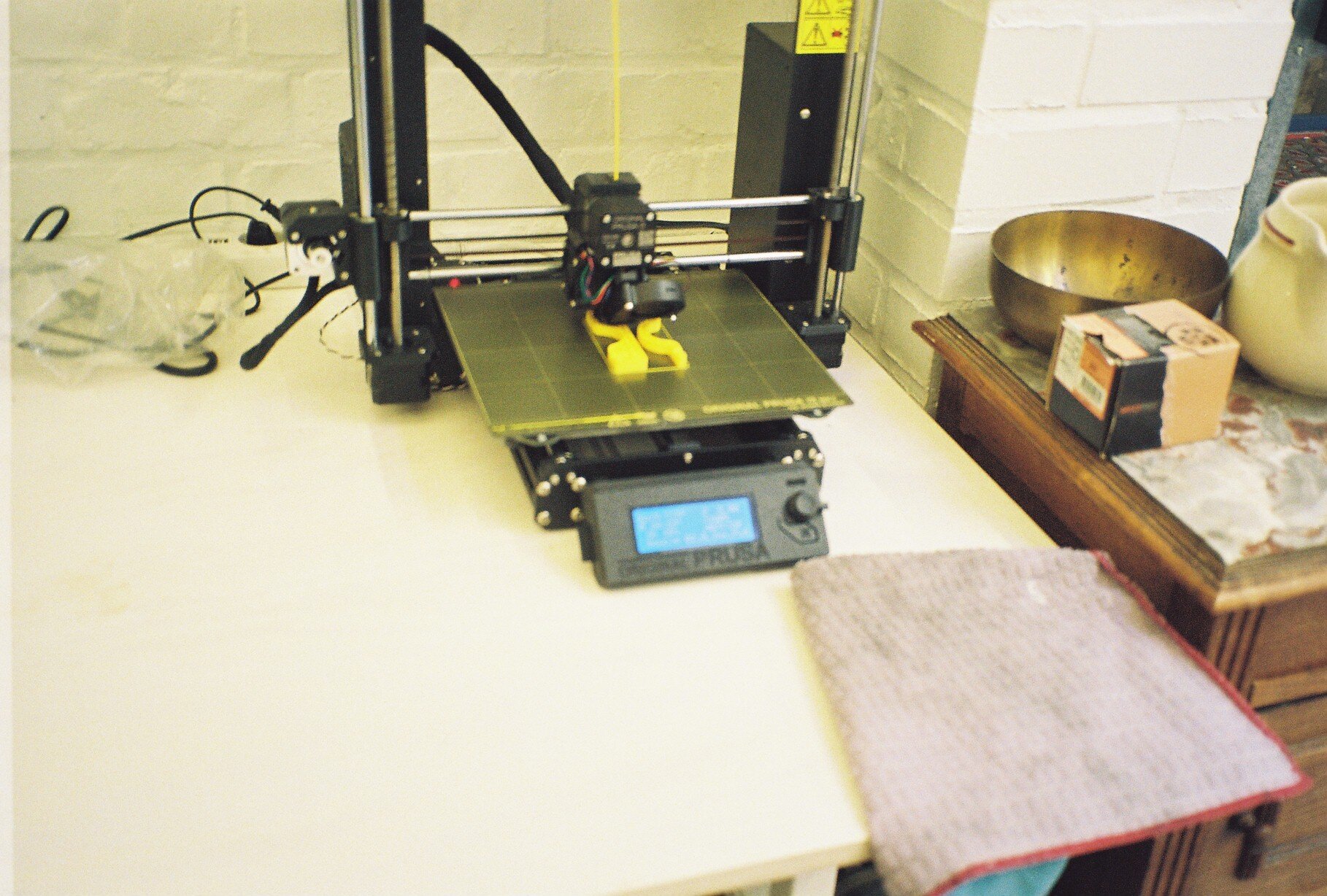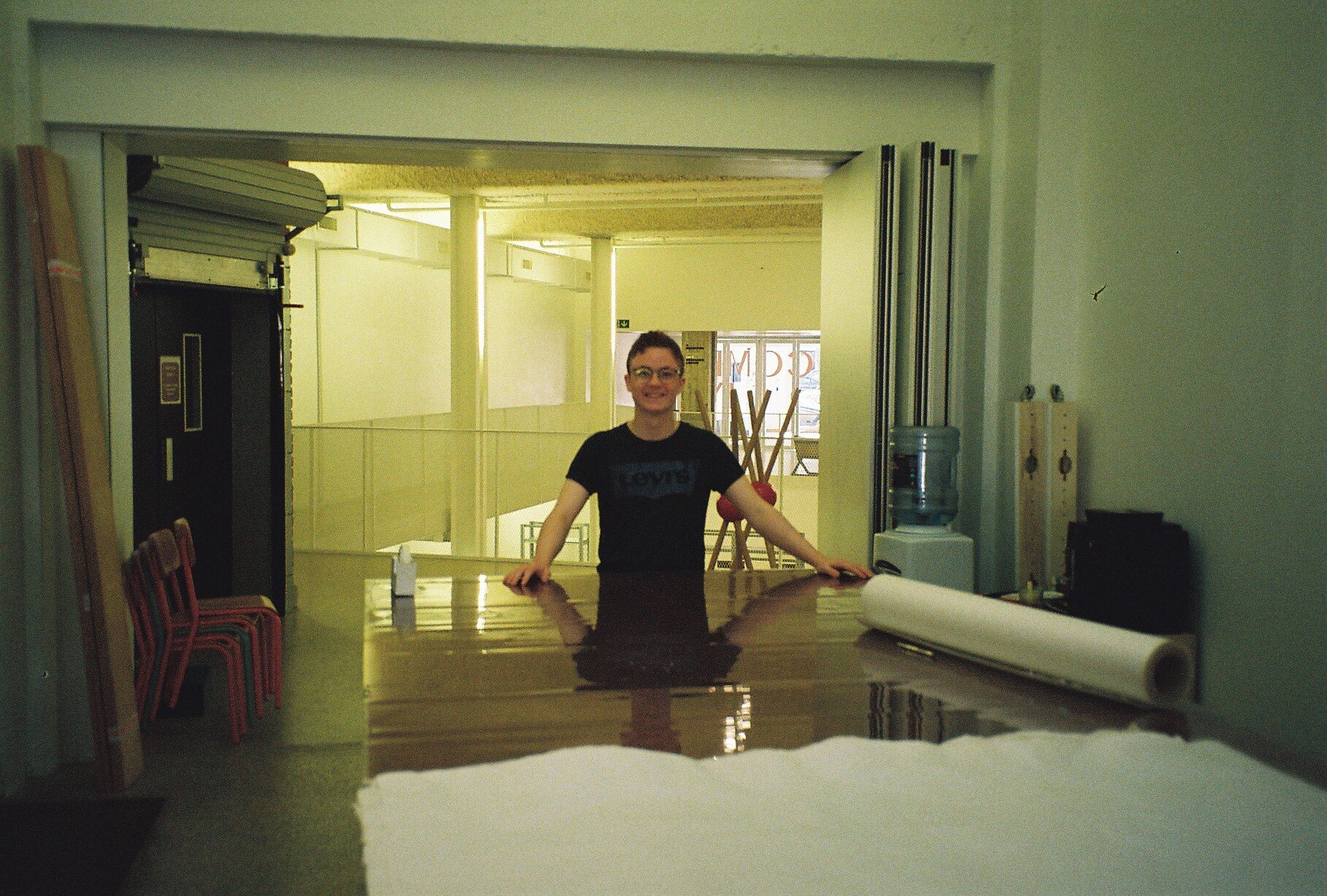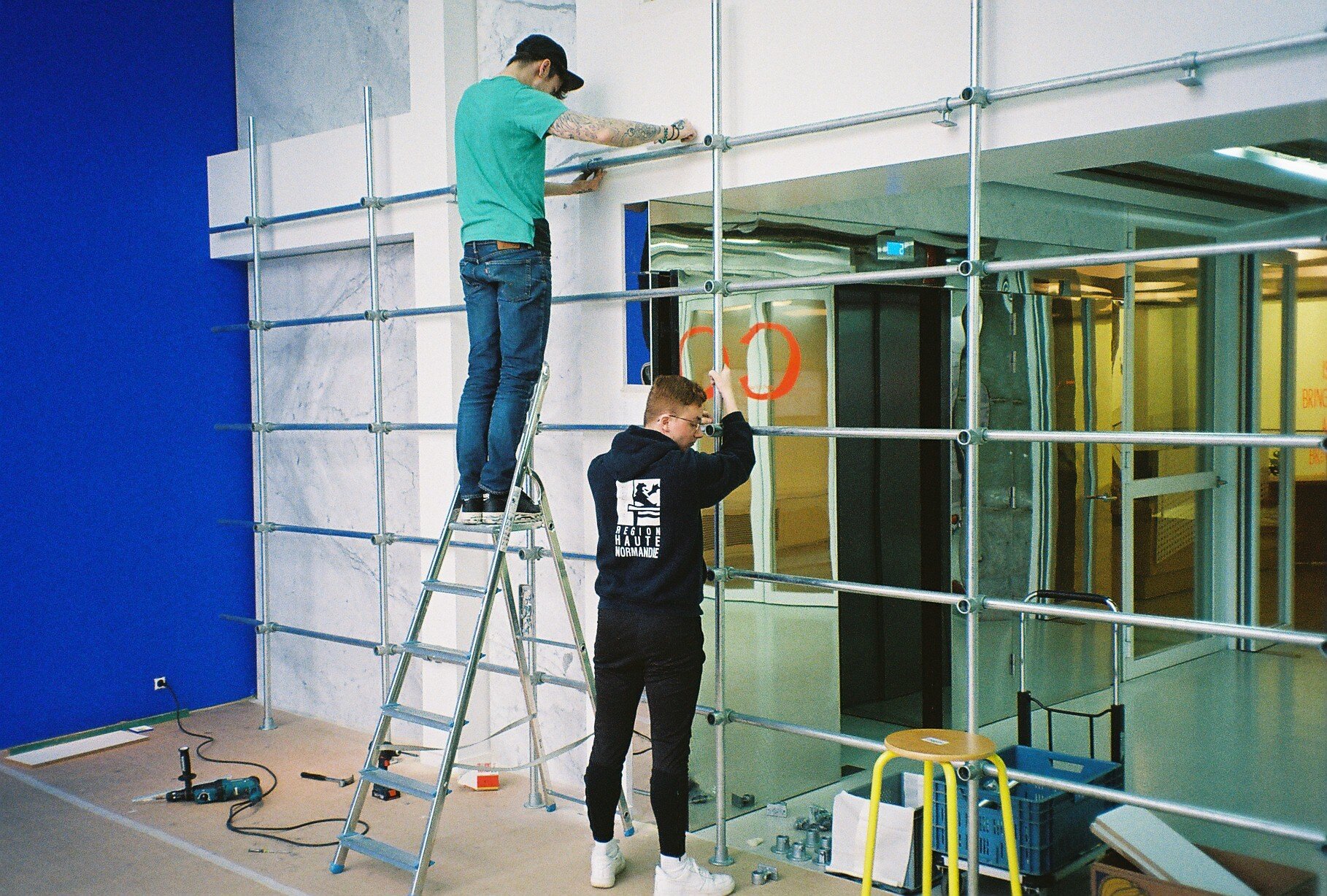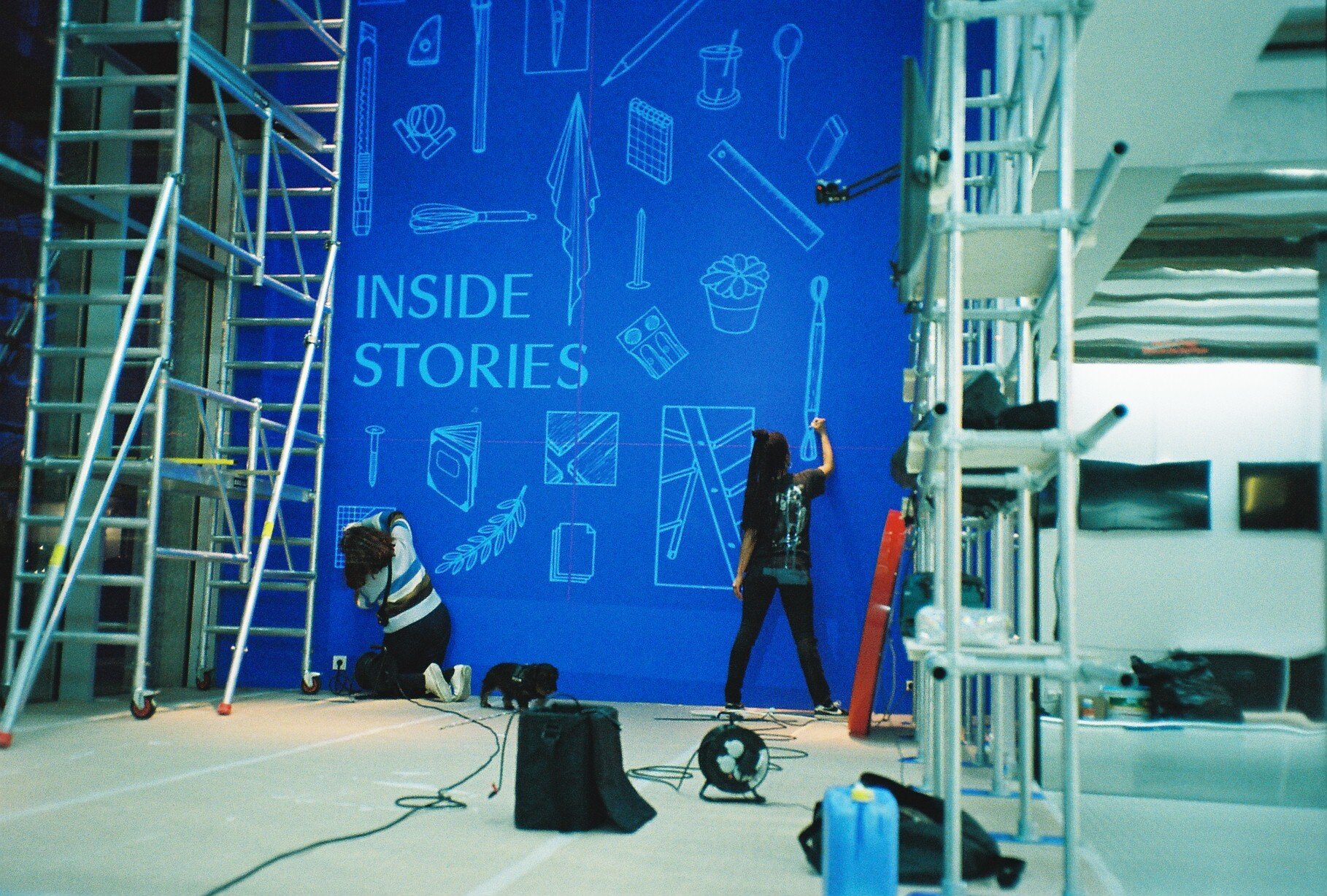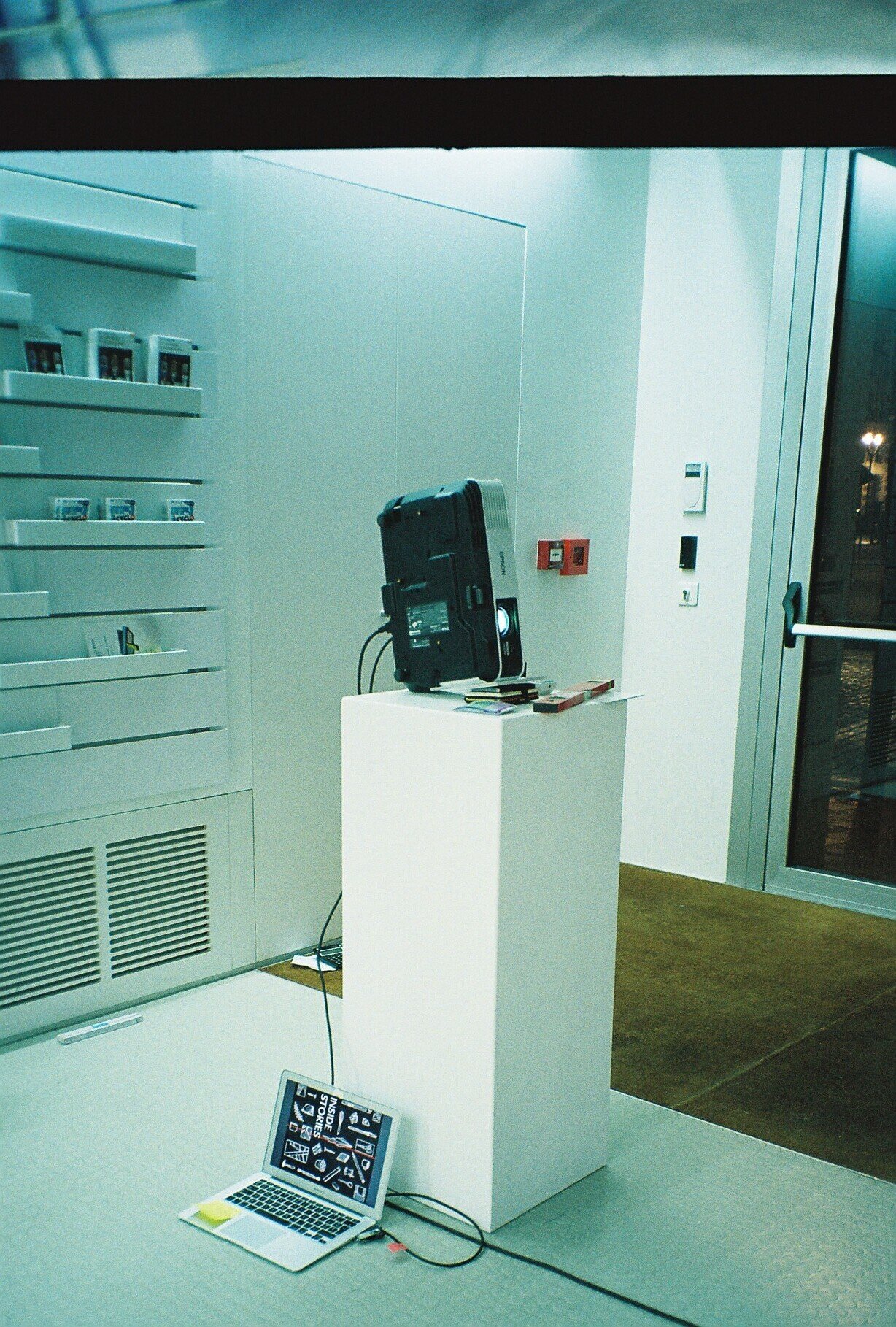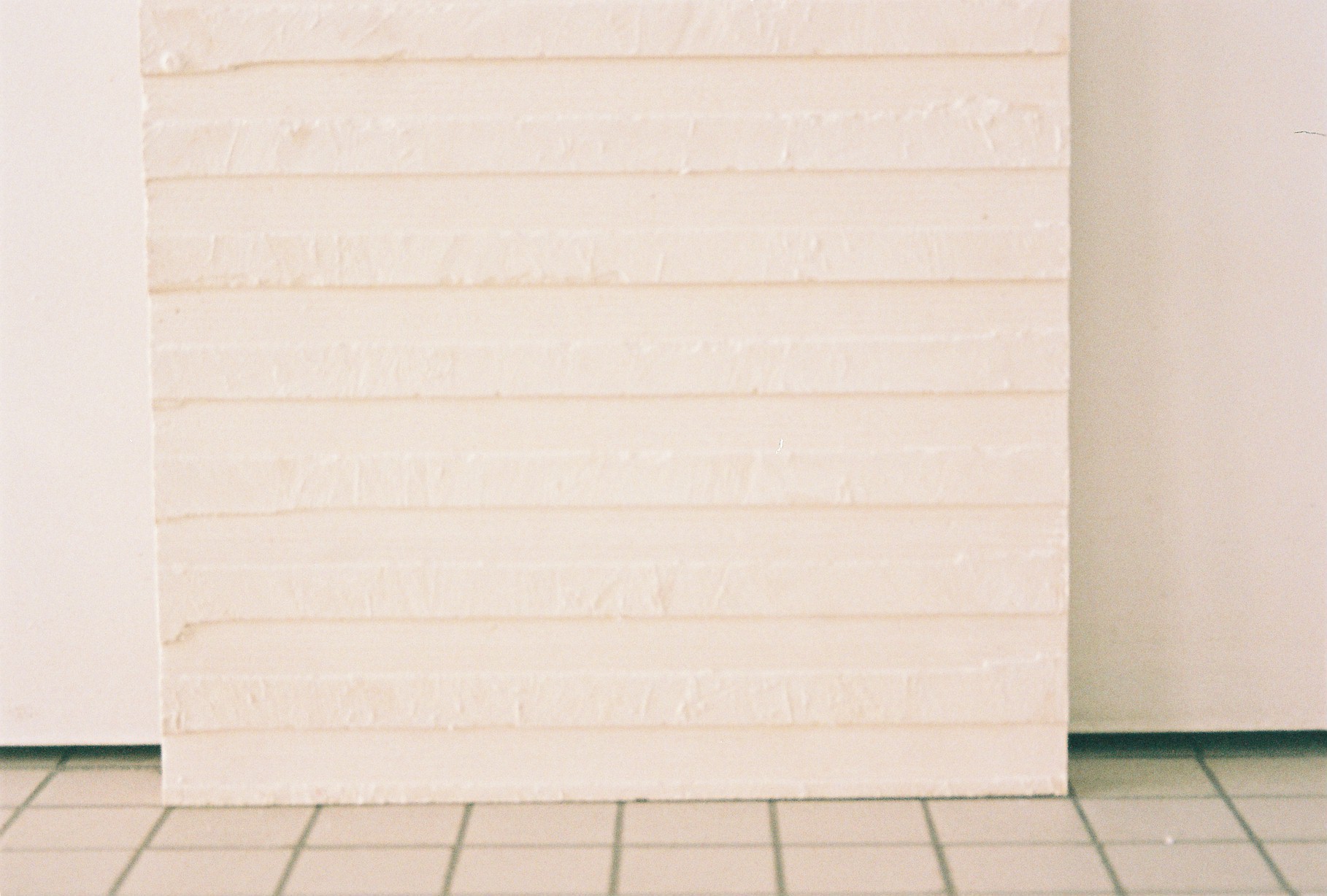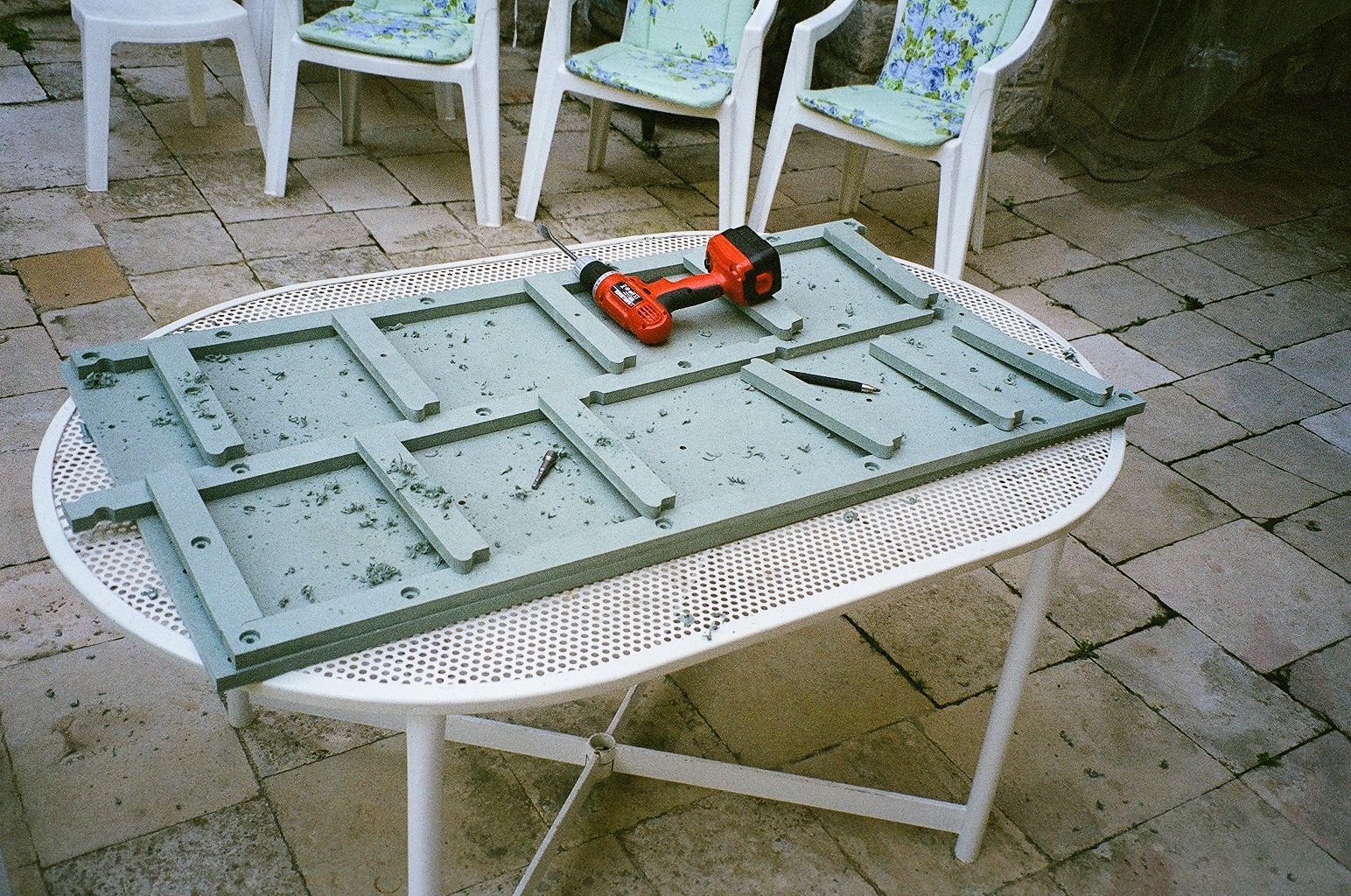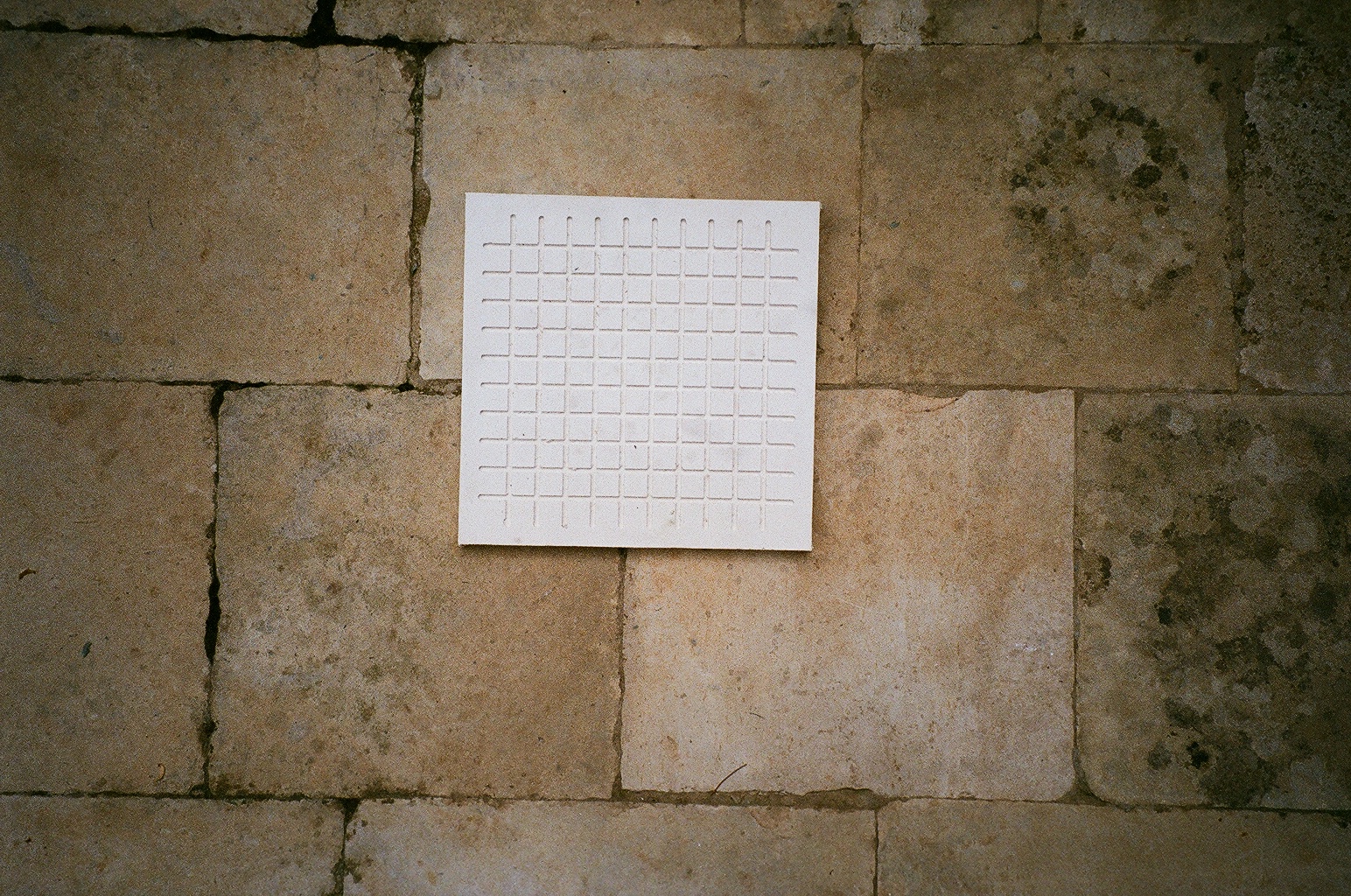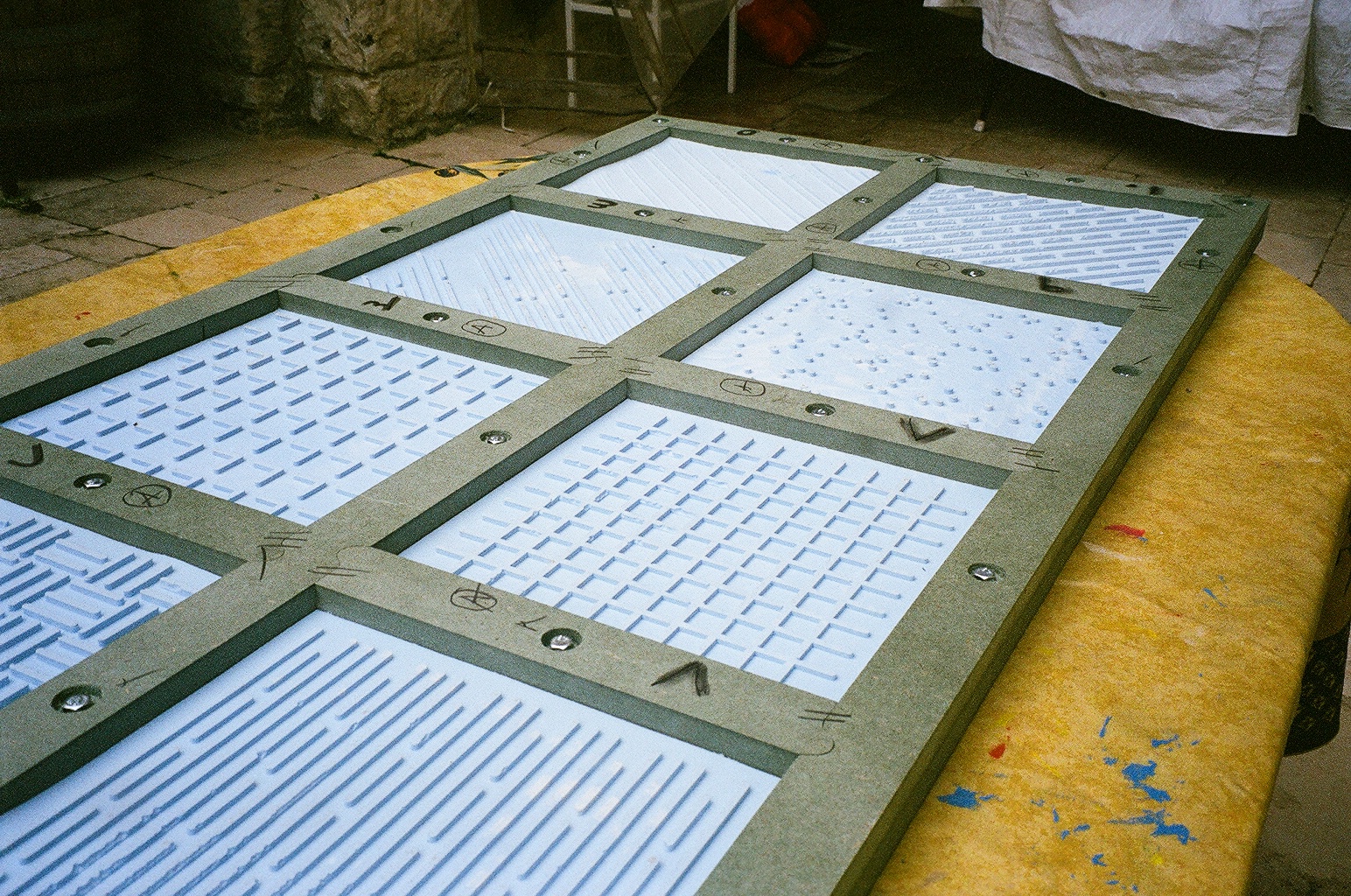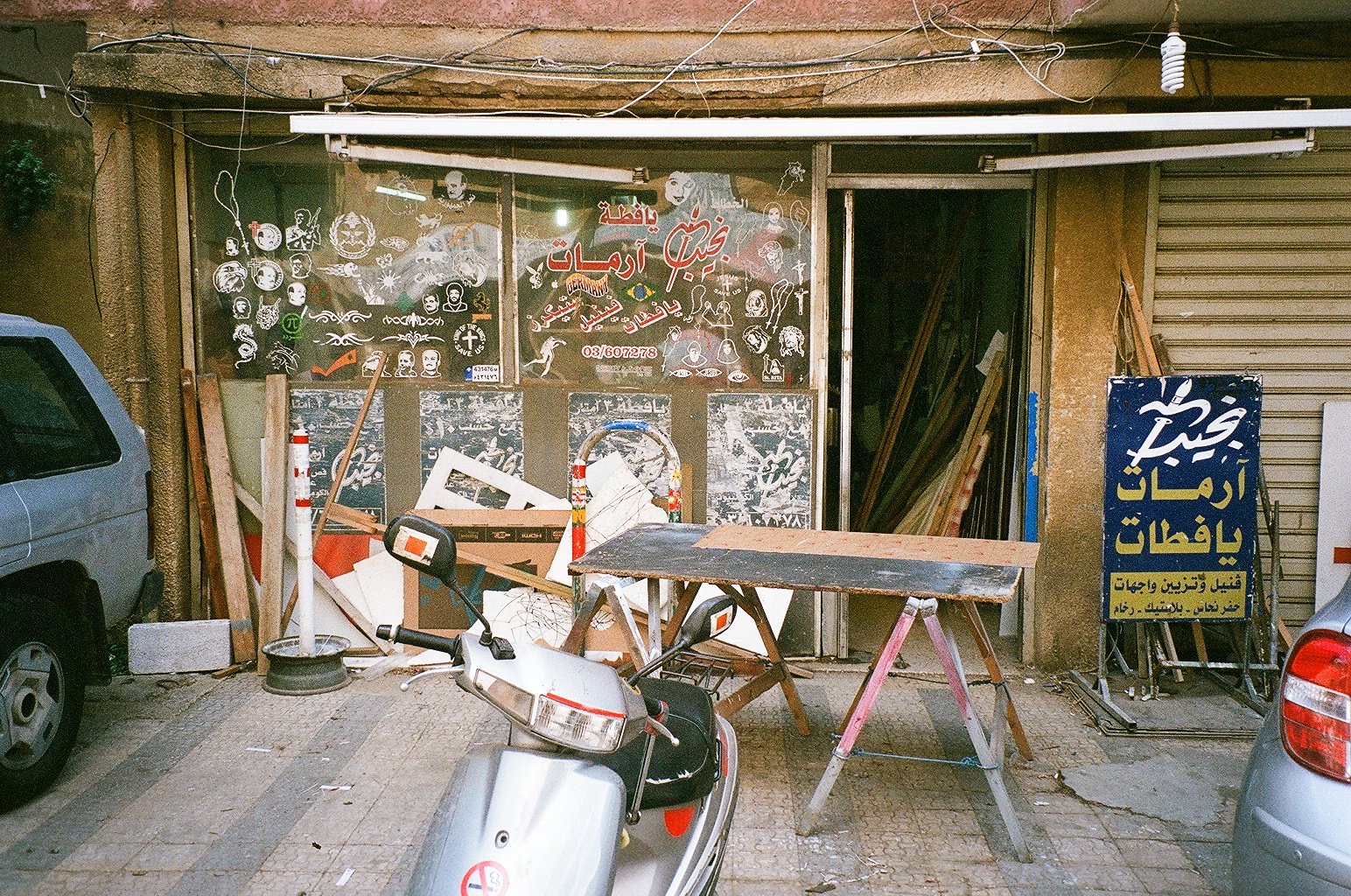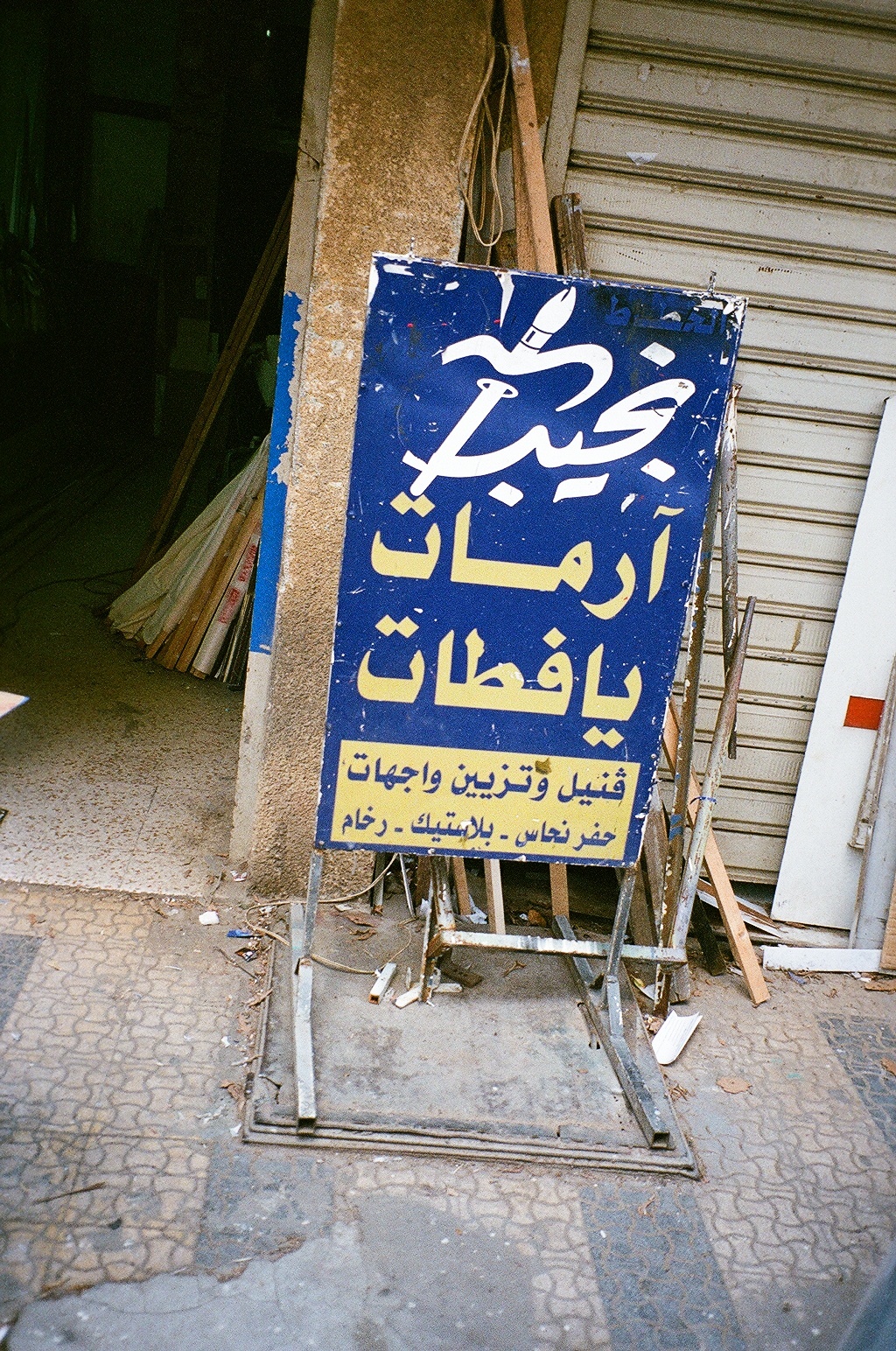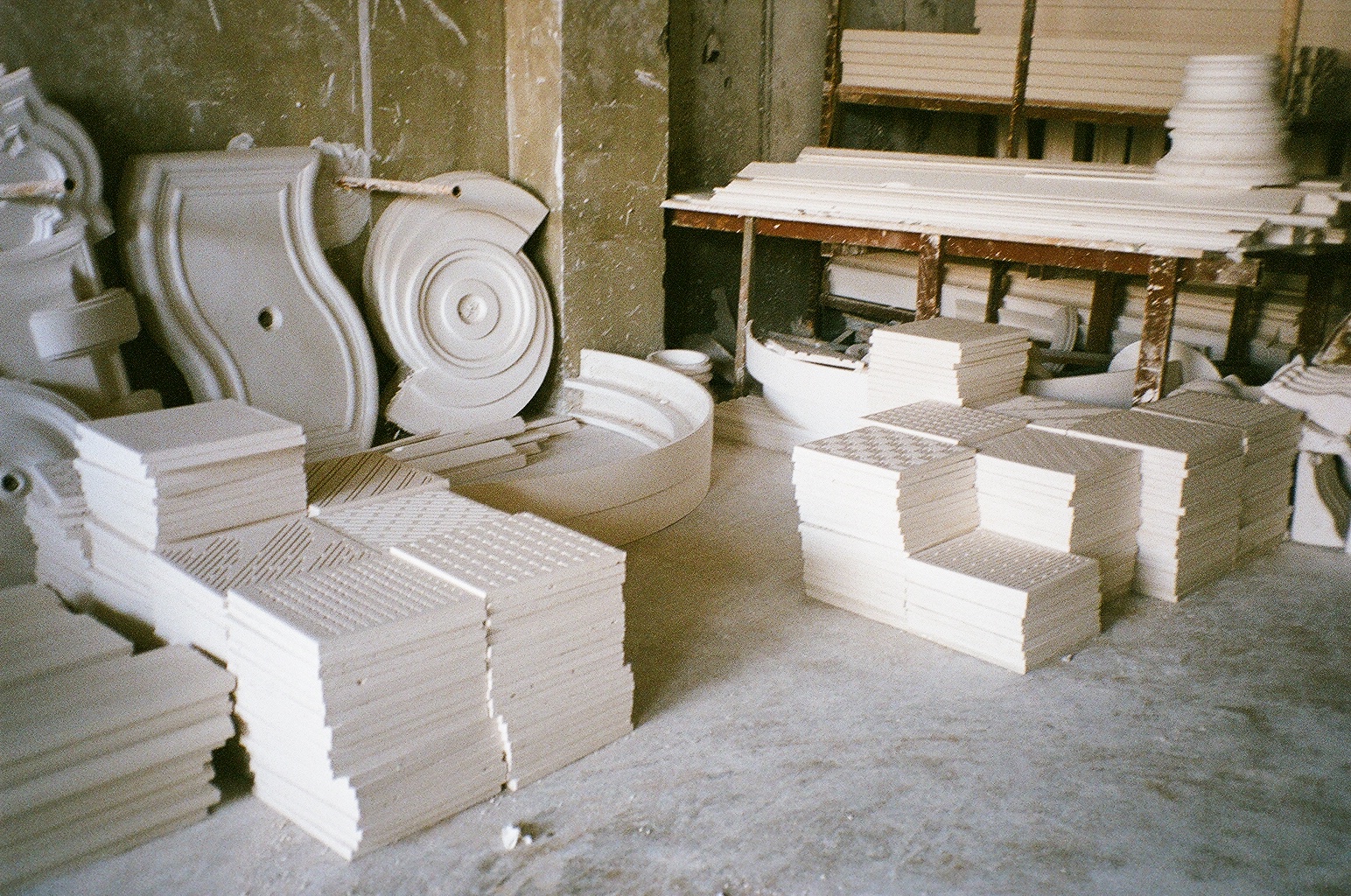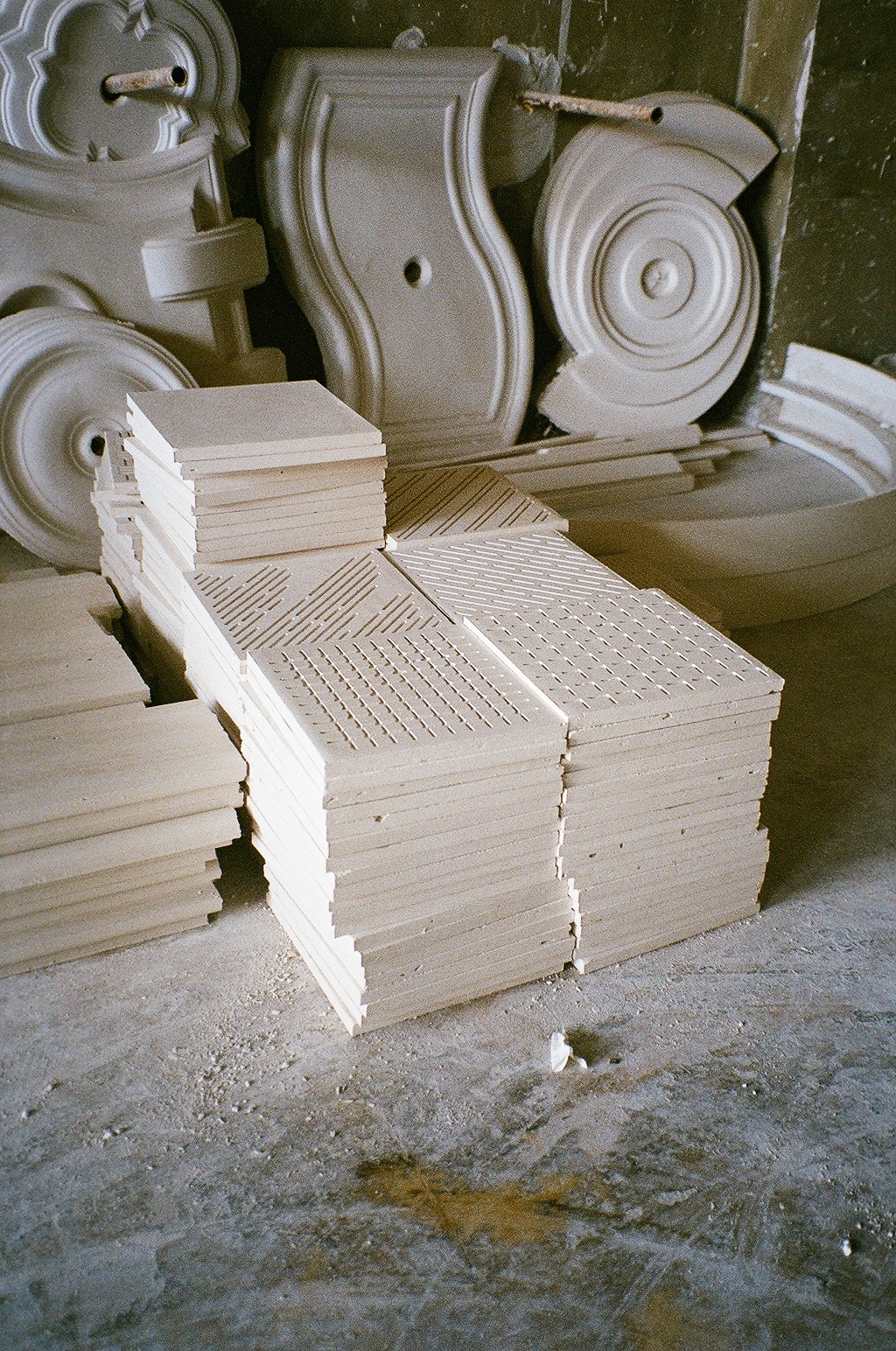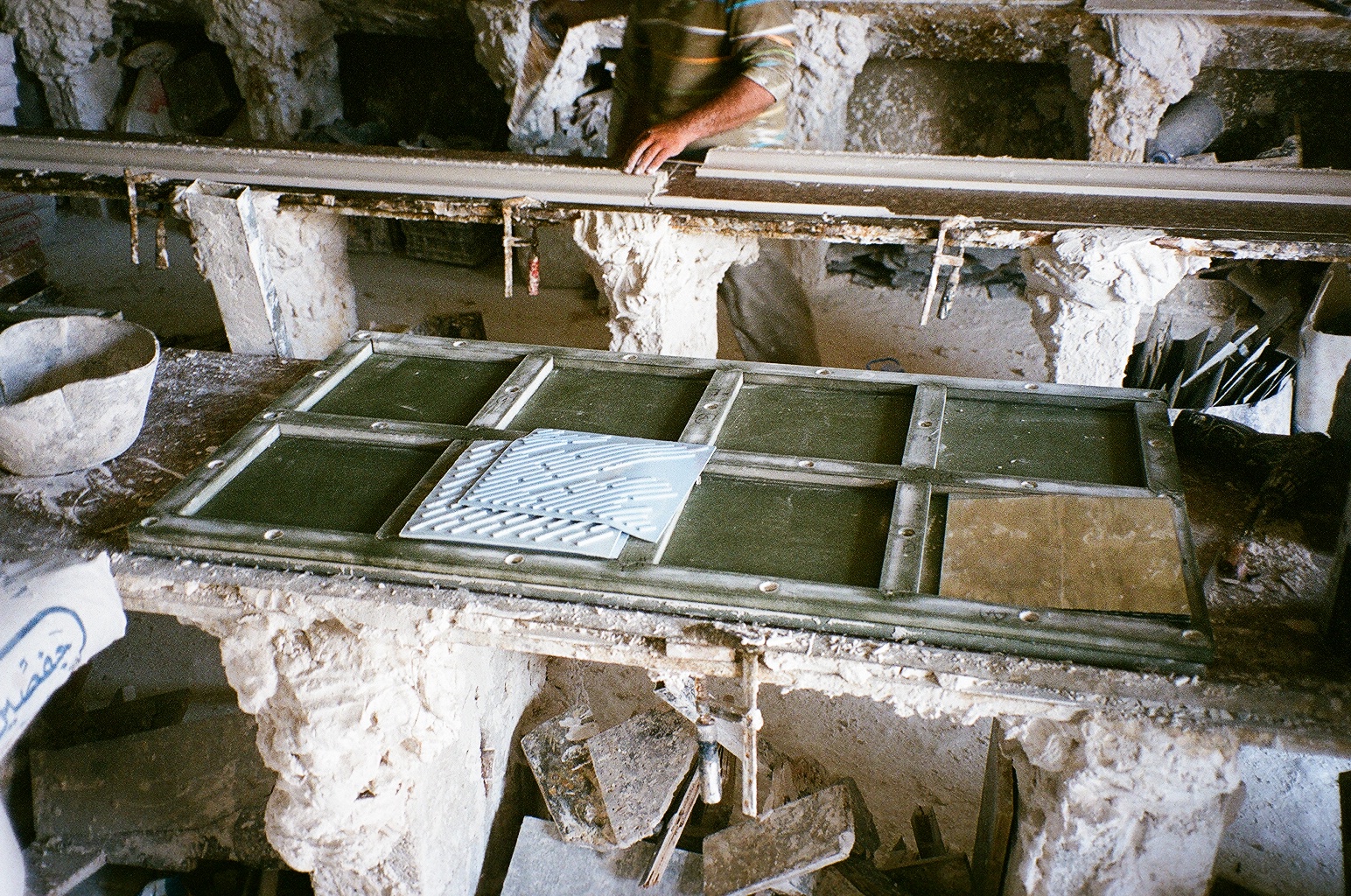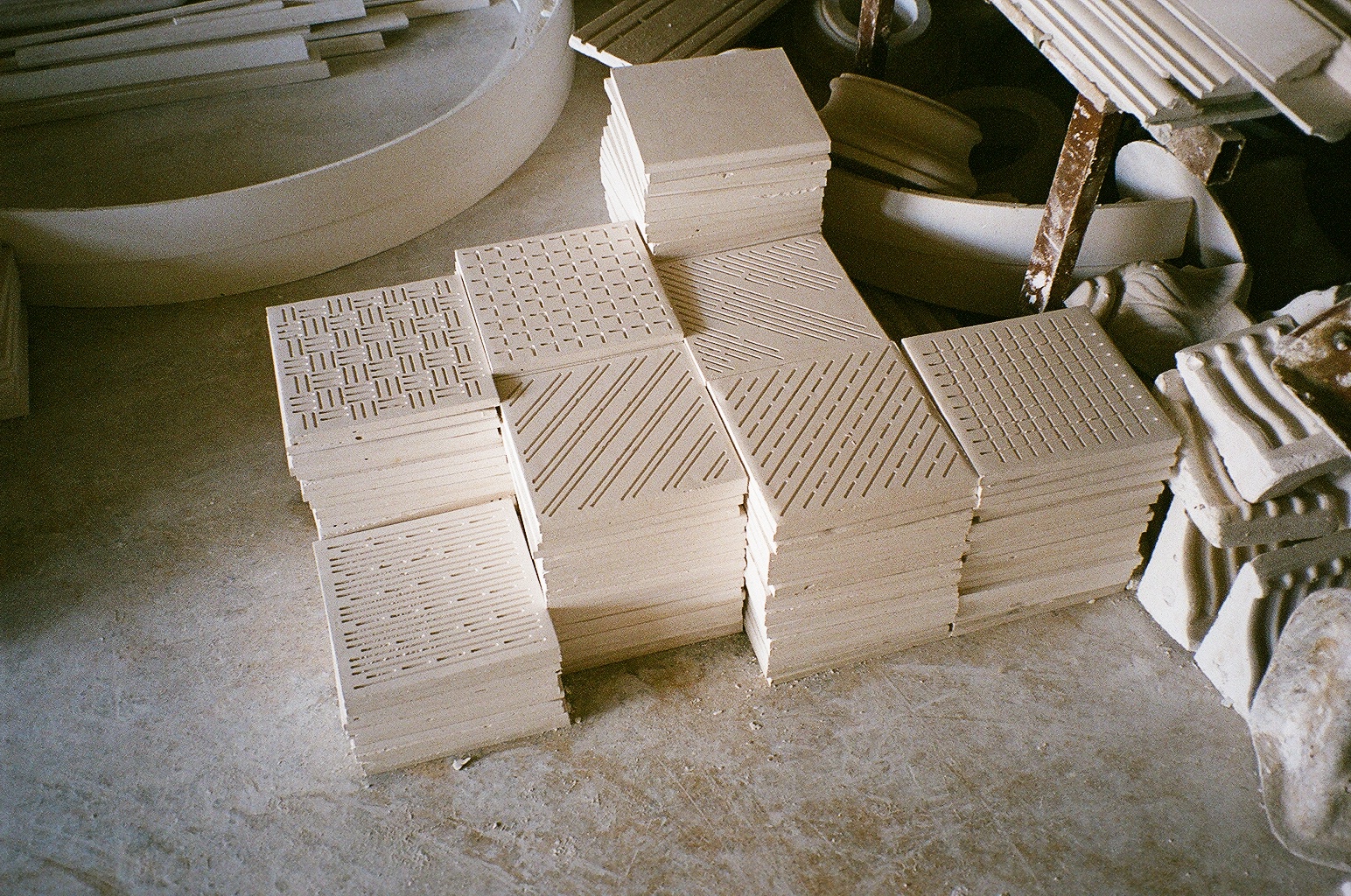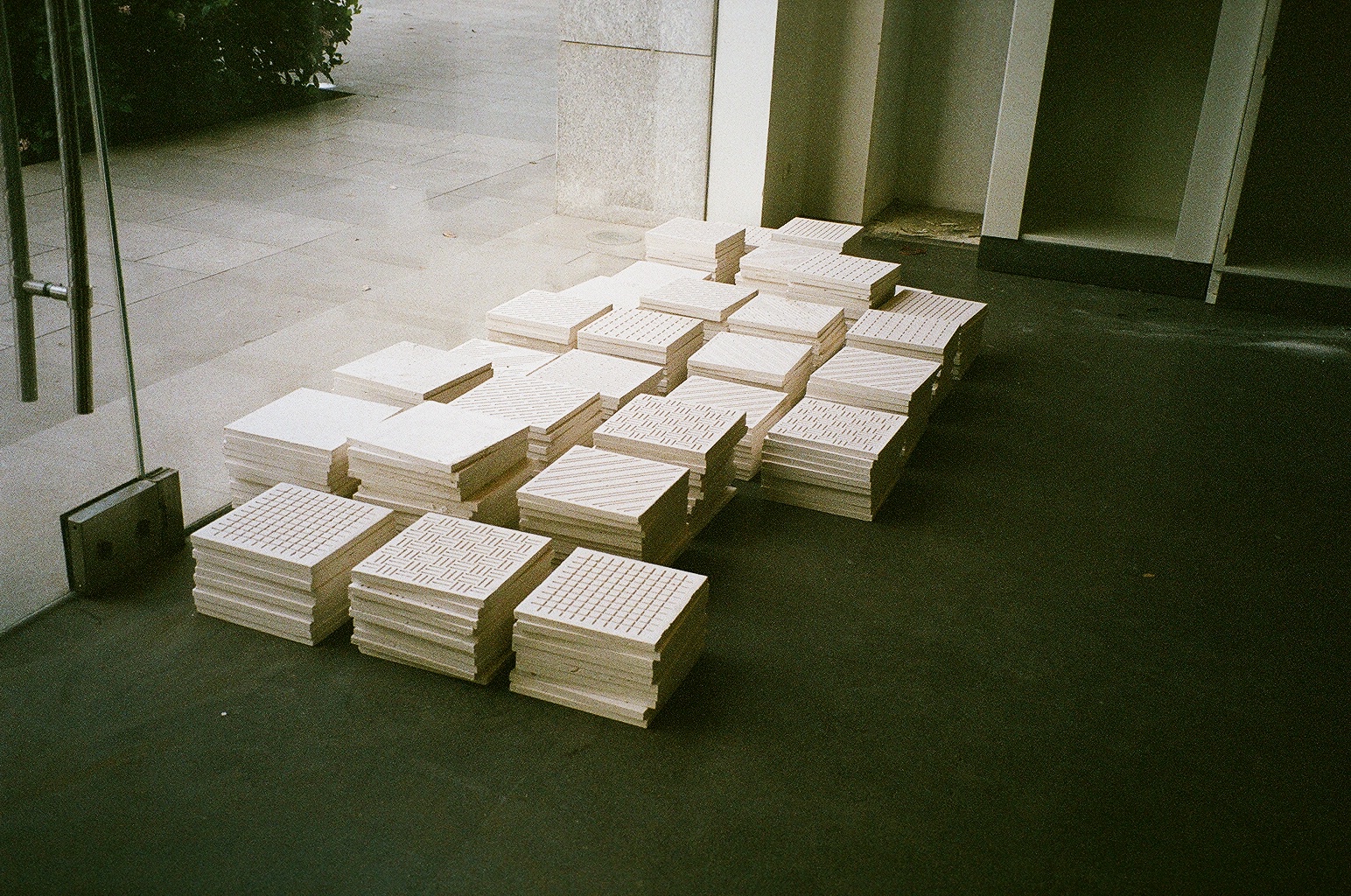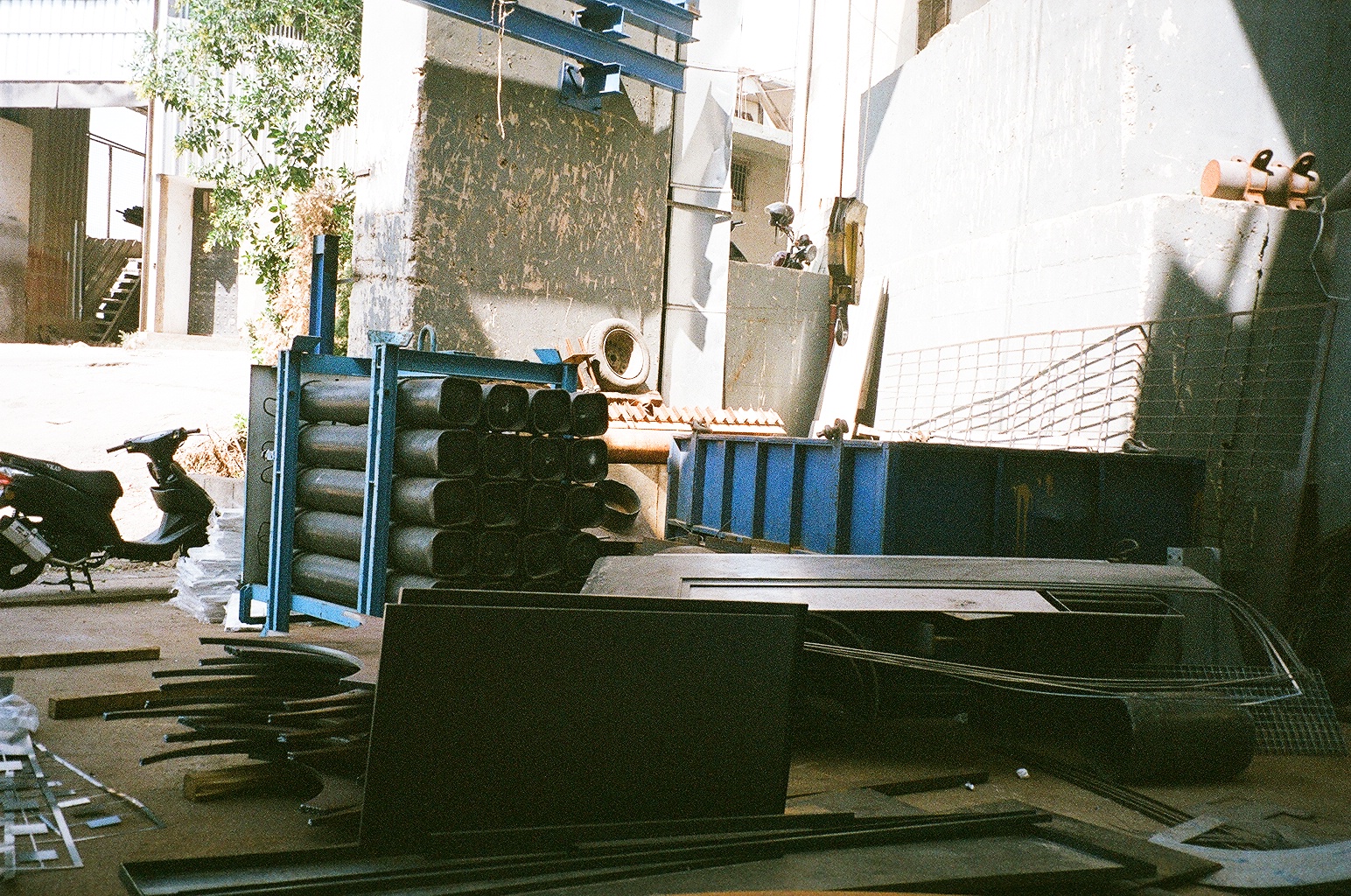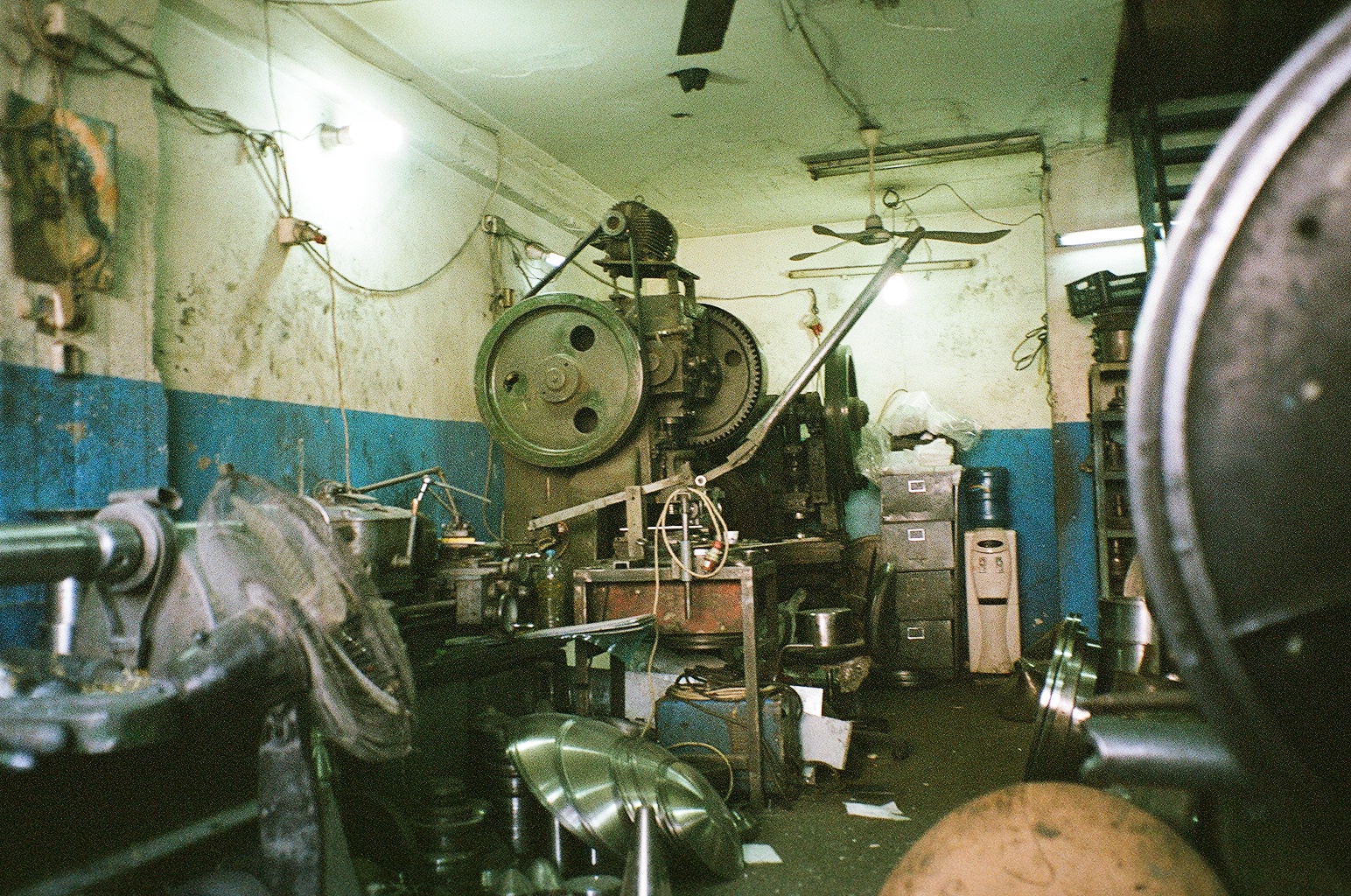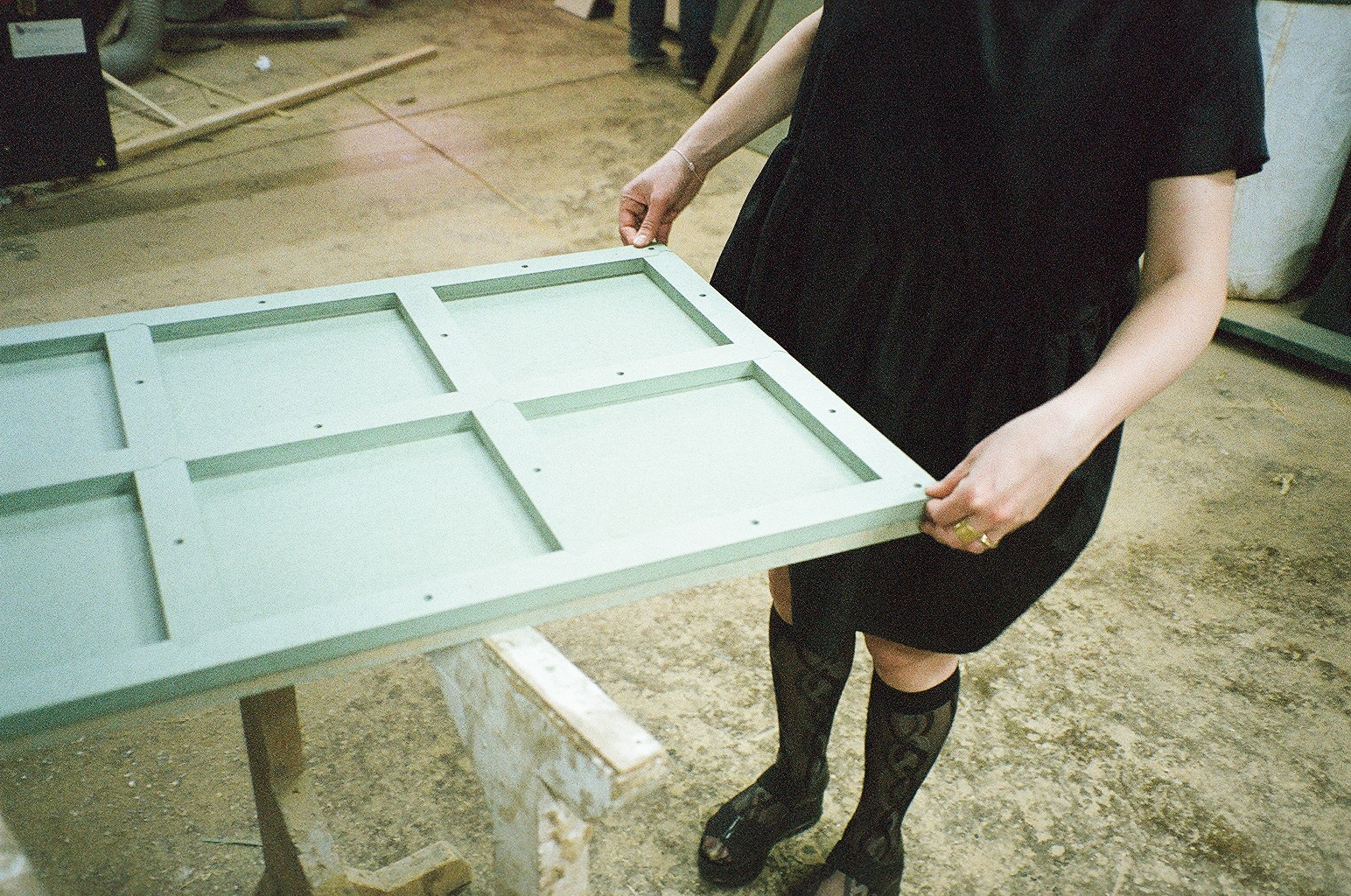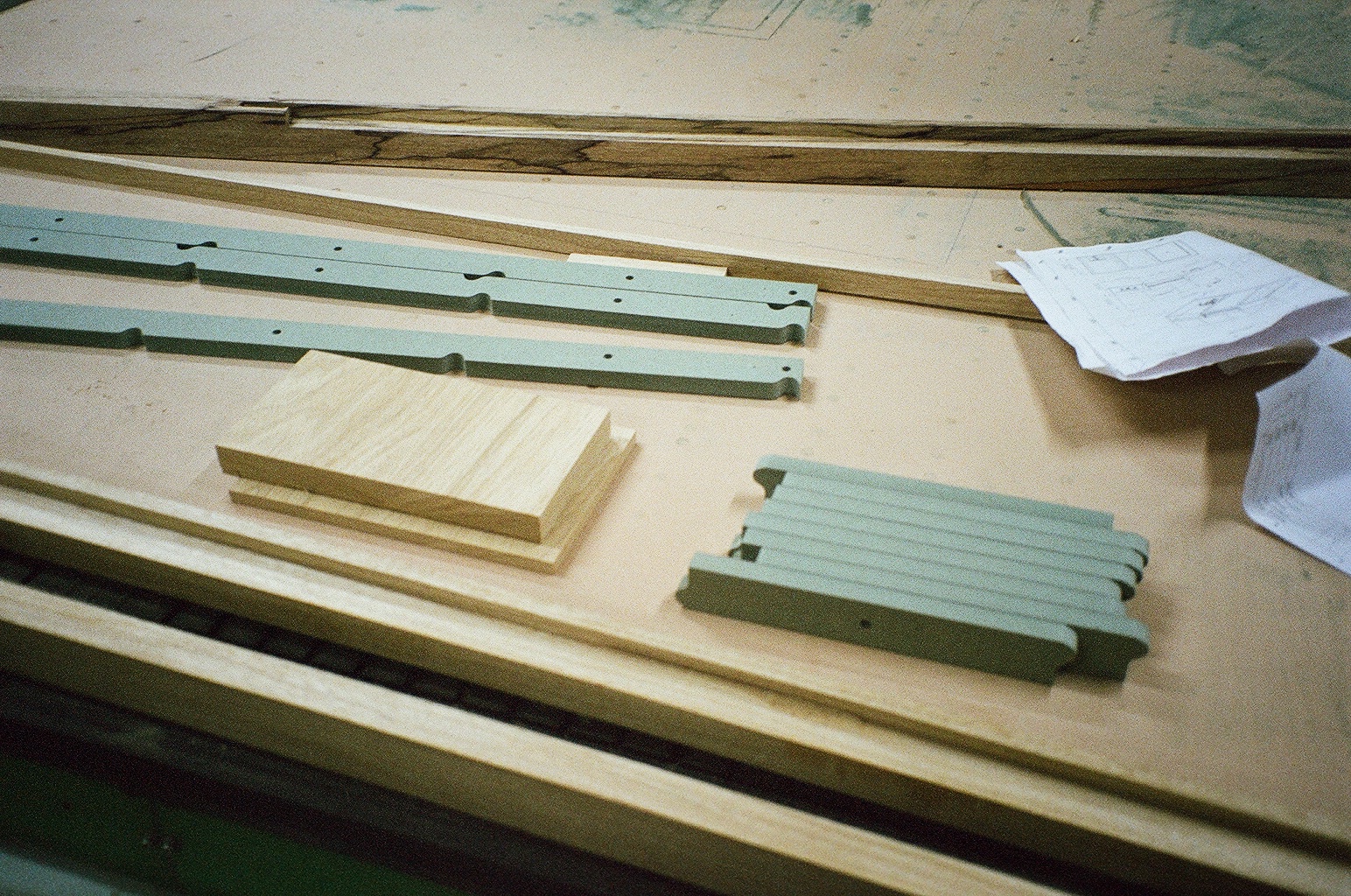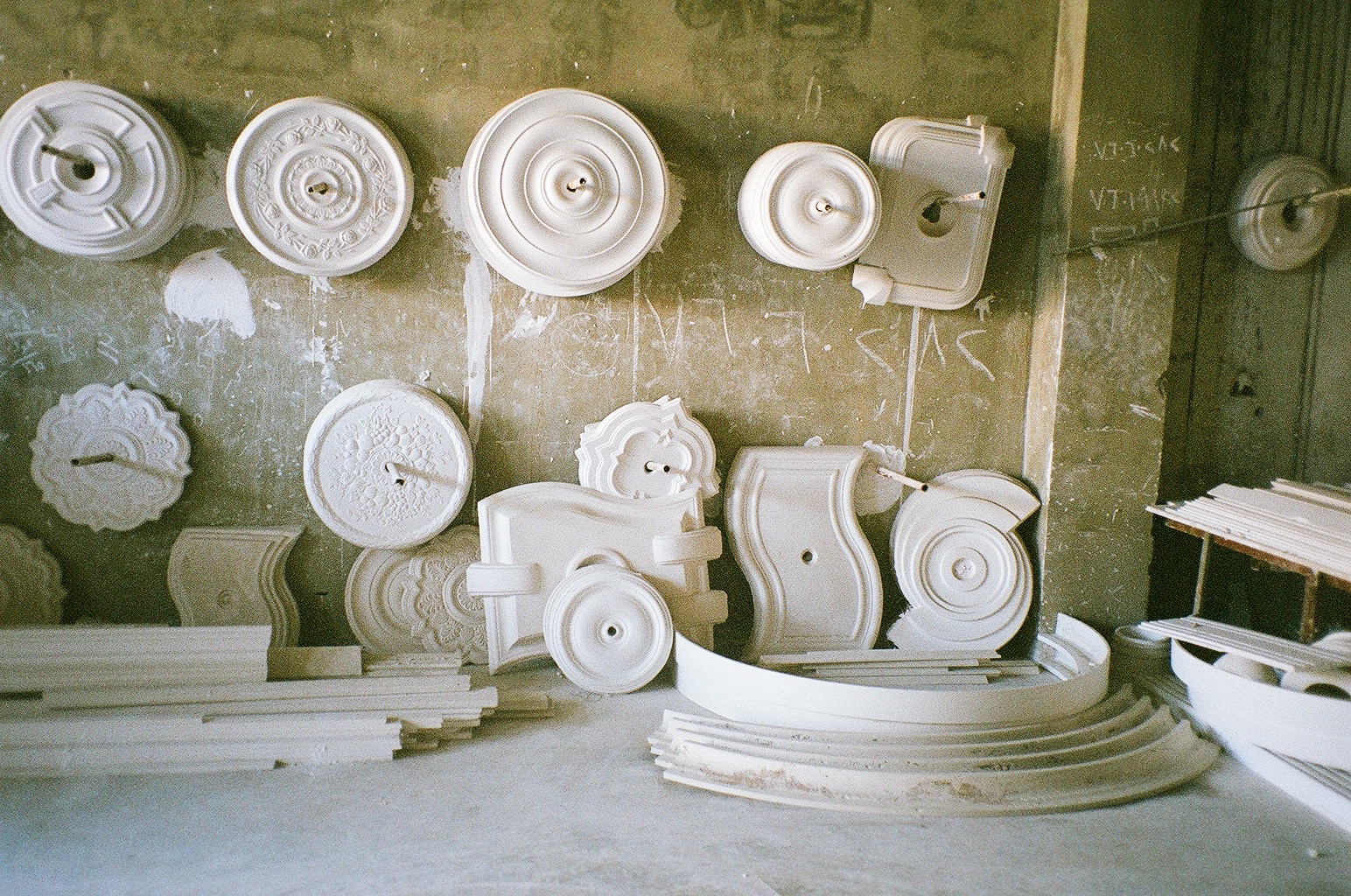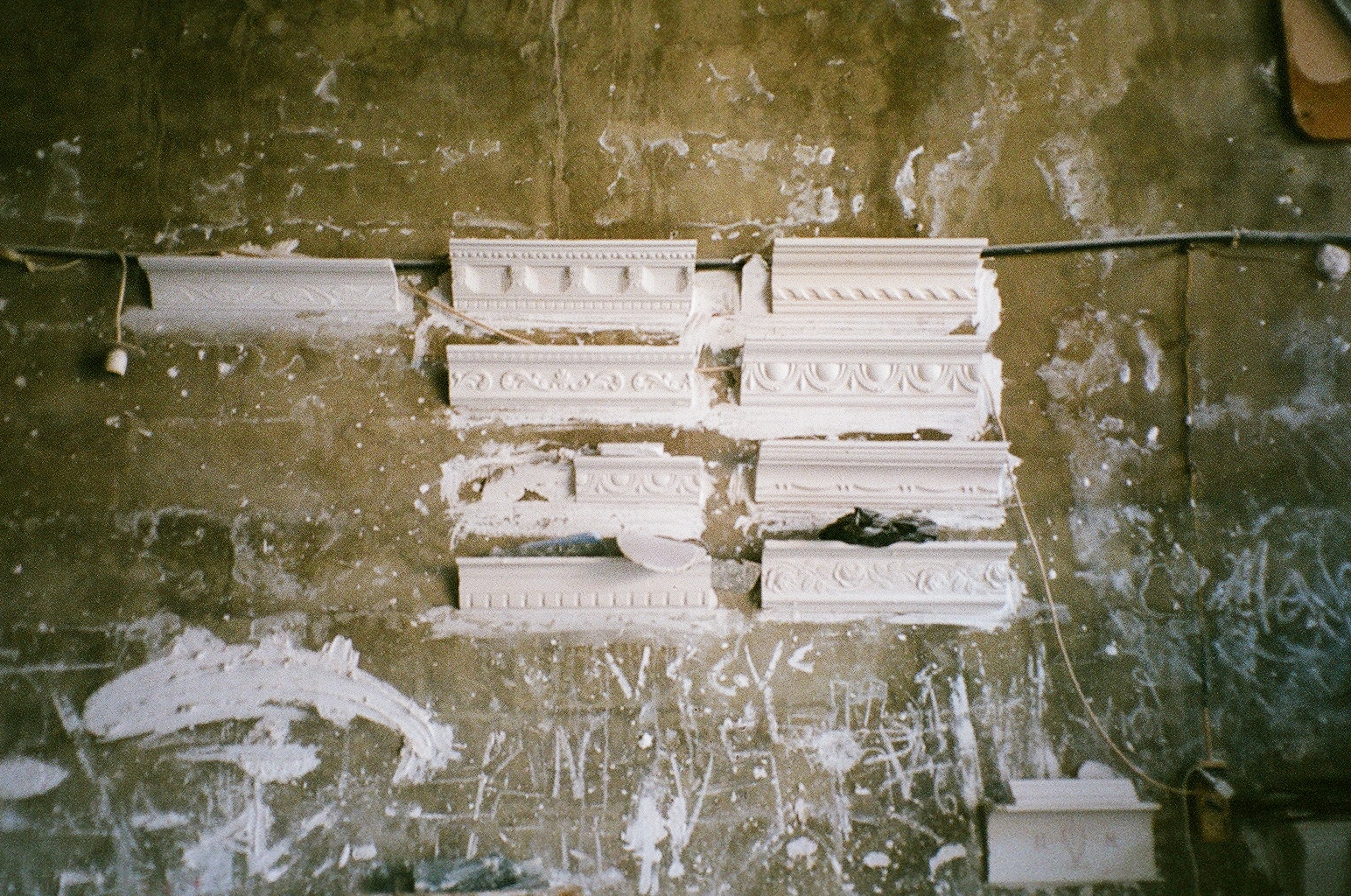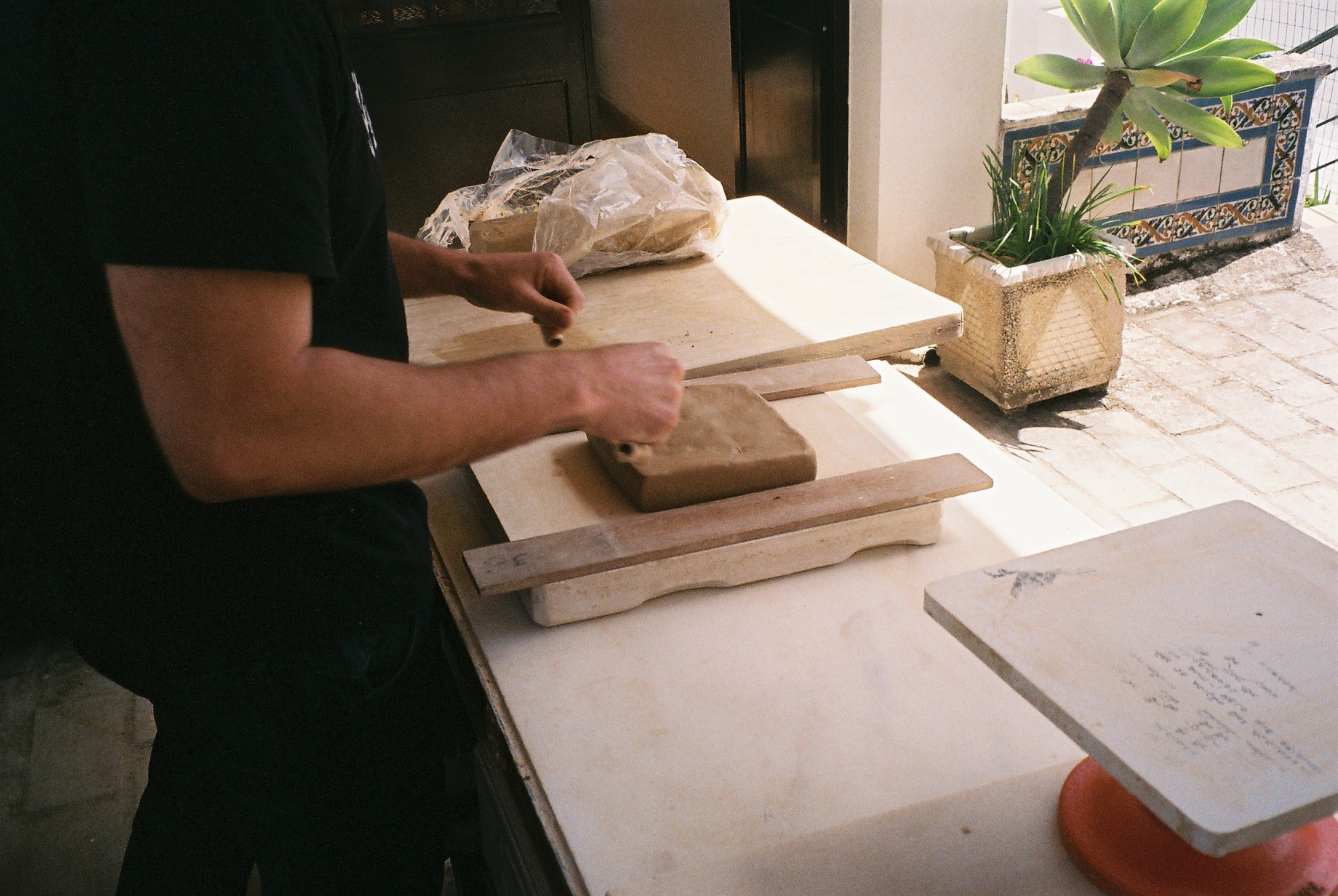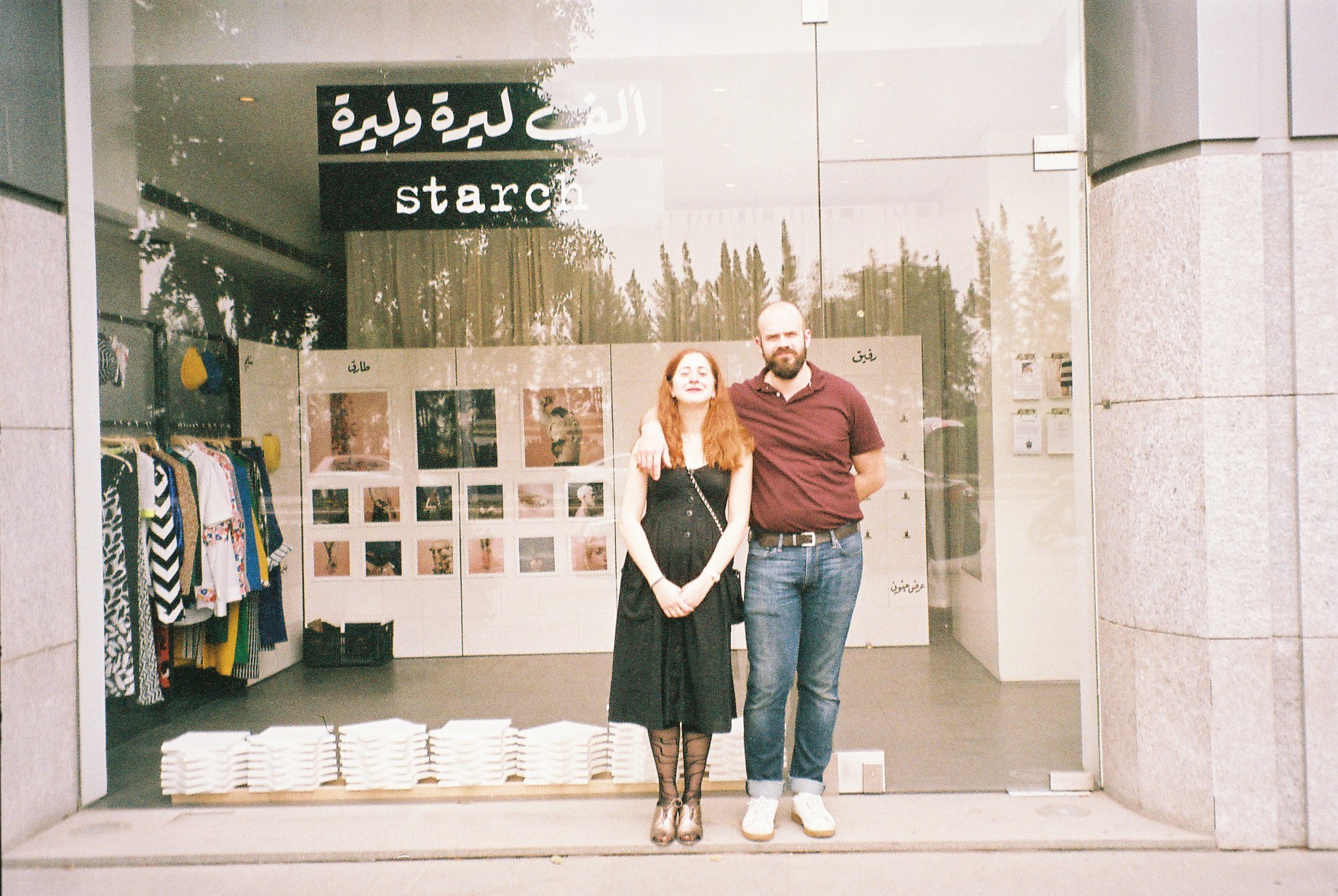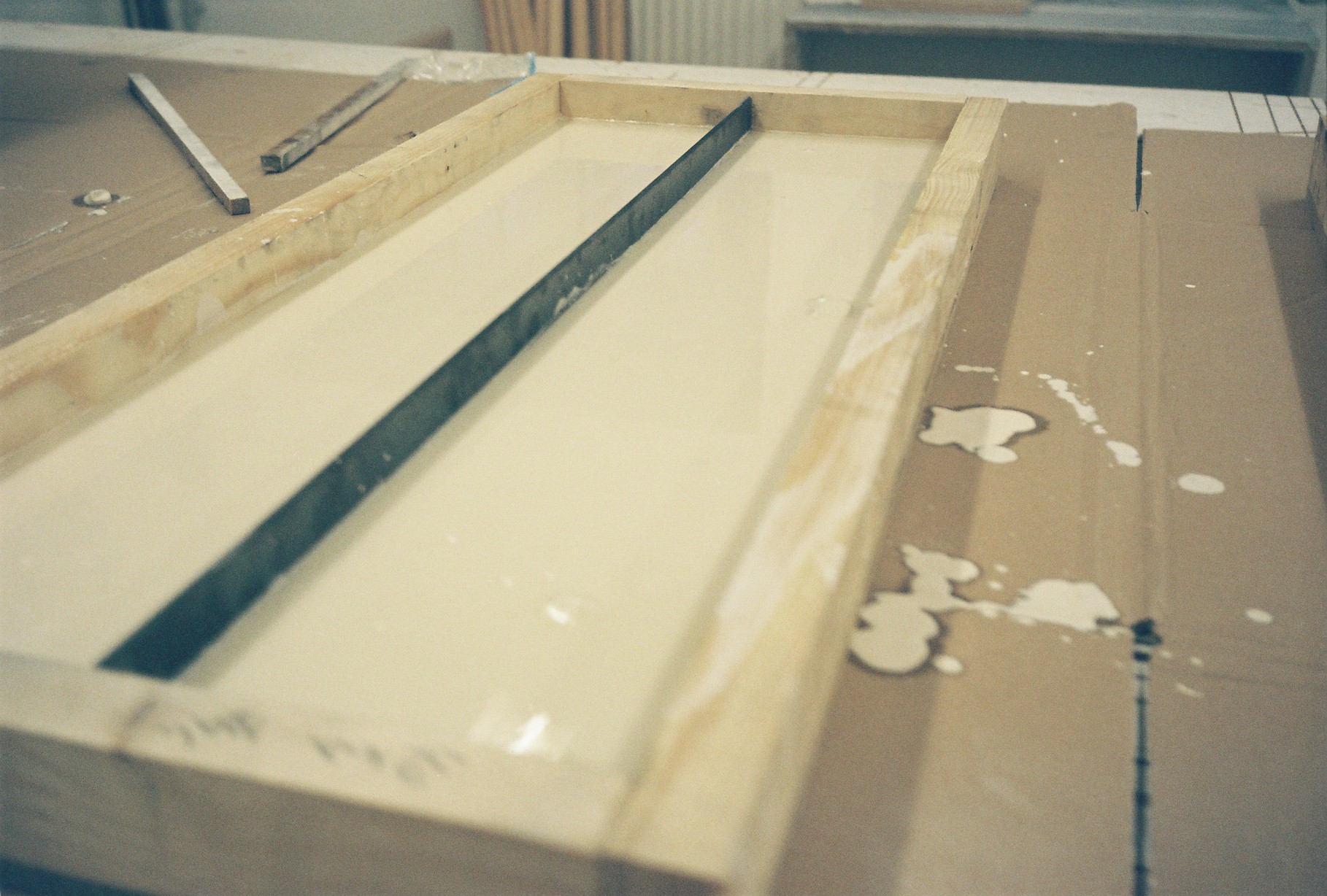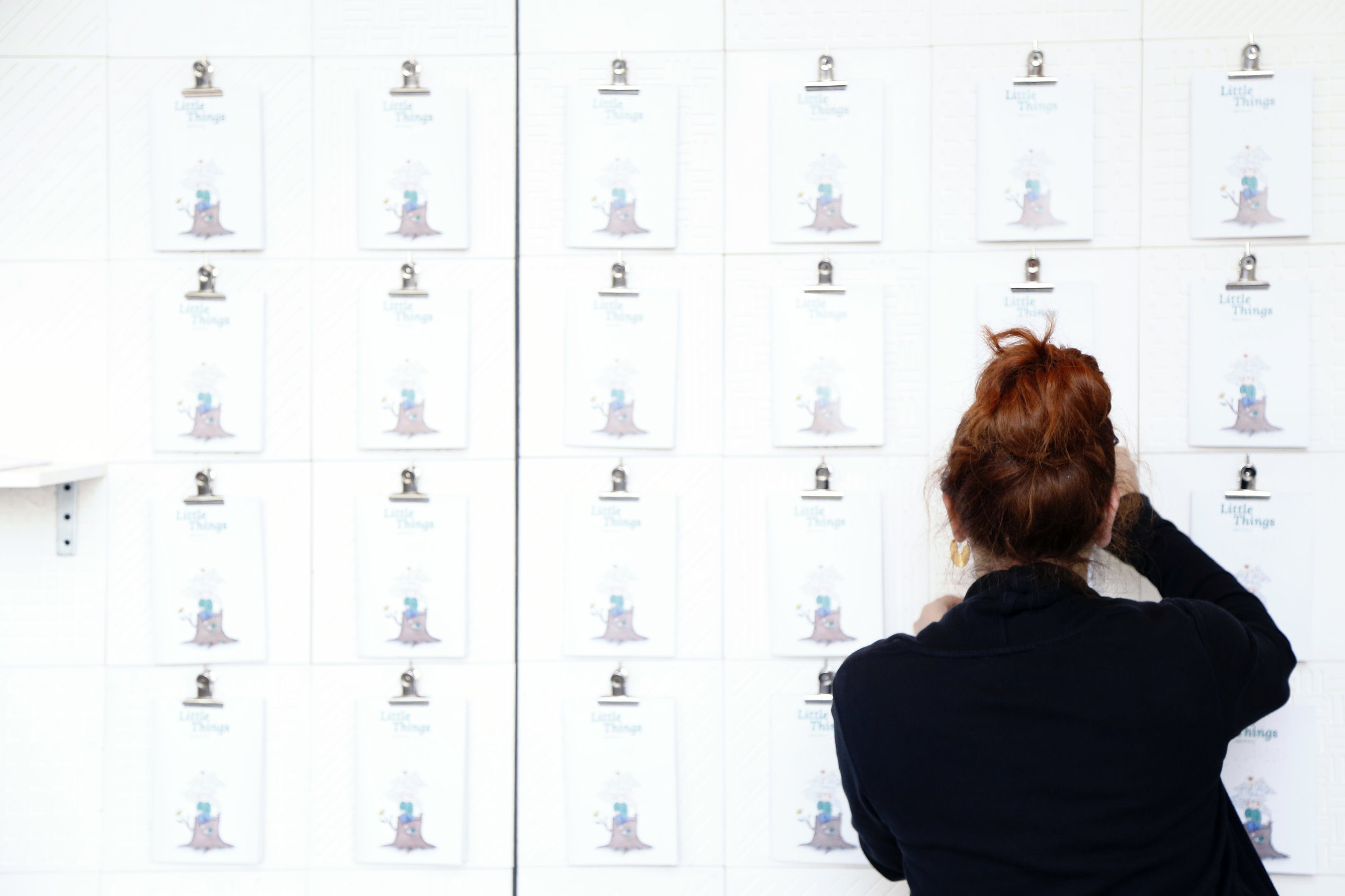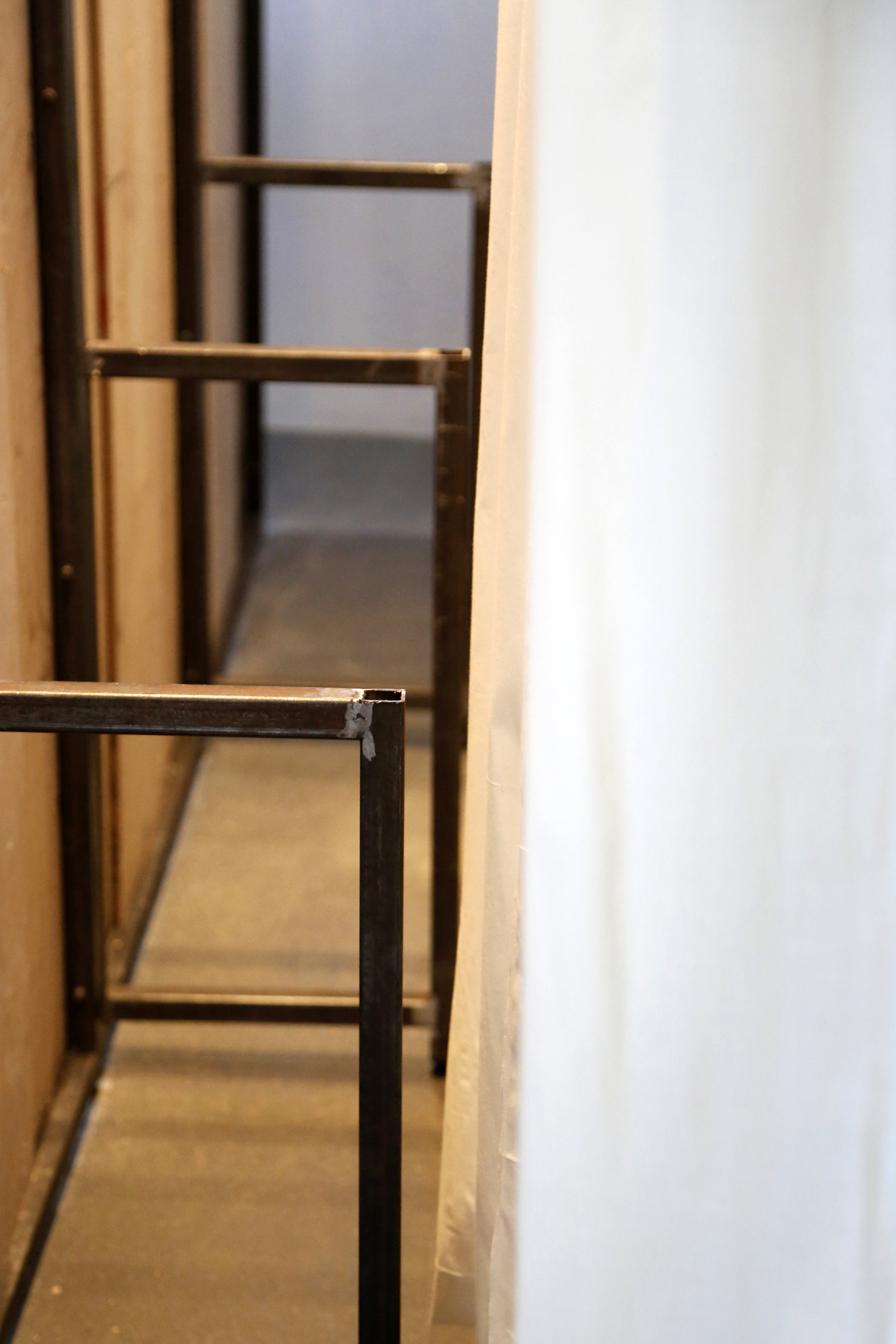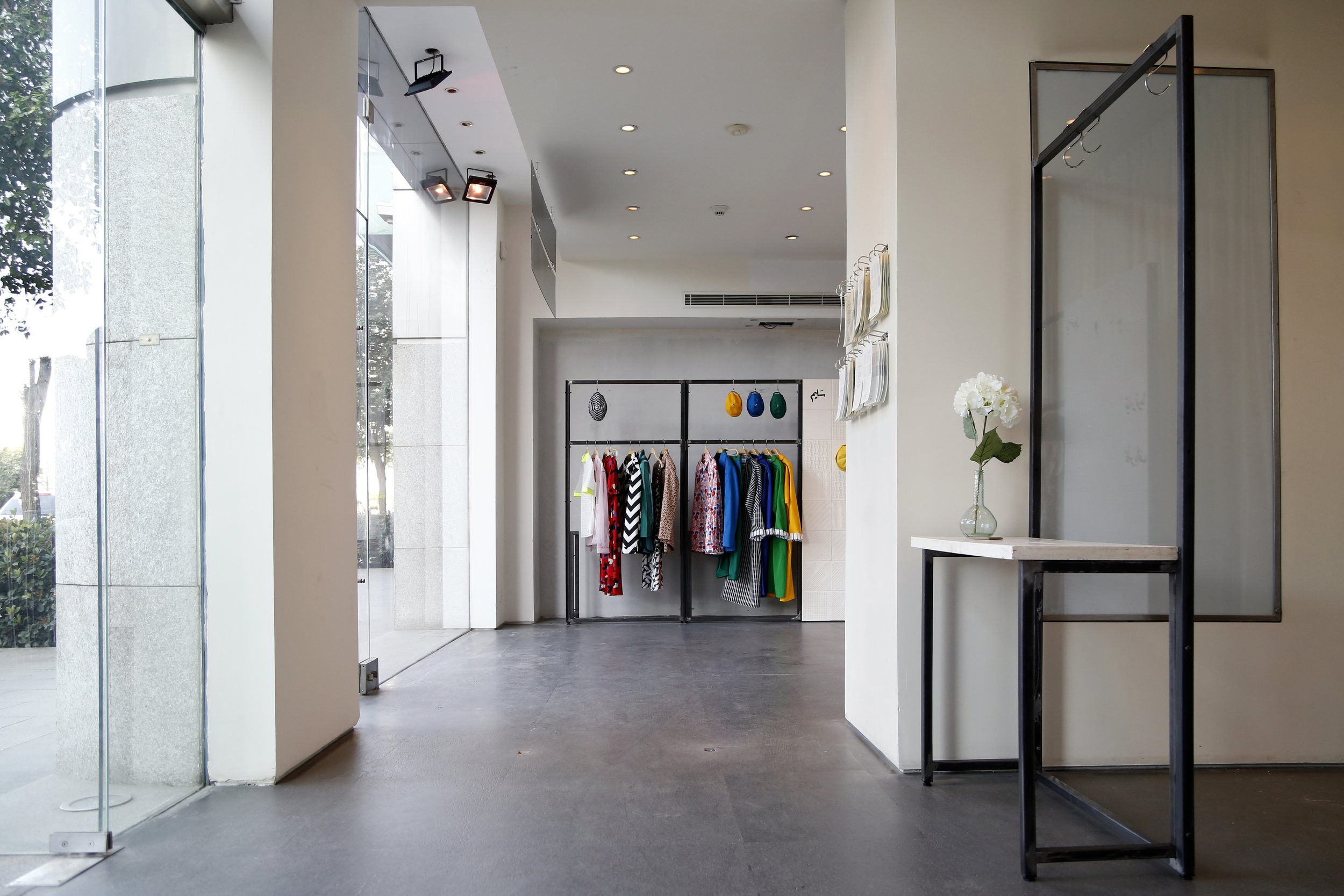Inside Stories
A window of windows, of Inside Stories.
One of translation, transcription and essentially transmission.
This scenography, commissioned by MAD Home of Creators, is designed to host a series of fortunate events, from master classes to conferences and workshops.
A window of windows, of Inside Stories.
One of translation, transcription and essentially transmission.
This scenography, commissioned by MAD Home of Creators, is designed to host a series of fortunate events, from master classes to conferences and workshops.
We looked at the theatre as a space of transmission. From theatre to curtain. From a separating curtain to a technical curtain. A curtain of transmission. A frame of transmission. With one lighting element: the red mascot light that we previously conceived for MAD Home of Creators for the pop-up shop 100th Territory.
For the structure of the frame, we chose galvanised steel as it ages well, circular tubes for they could be easily assembled with ready-made connectors, reducing production operations.This system allows for reuse and flexibility for other events to come.
Inside Stories is a system
To the frame plug in the different tools of transcription. A camera capturing stills and top view moves, transmitting them on a screen. A tool that transcribes sound into words. A scanner that captures a digital imprint of a print. The content: Sound. Image. And text. All telling, the inside stories behind that window.
These different elements are fixed to the frame via home grown connectors that we customised and 3D printed with PLA, recyclable plastic.
All surfaces of the frame are cut out of material made from heat pressed residues of beer production.
The spatial configuration is defined by an annotated grid hand marked on the floor on which the furniture moves and adapts to the different types of events happening in the window space. The grid on the floor follows the grid of the frame structure.
#WIP
This same grid serves as a ruler for the wall, allocating spaces for the collaboration with Shayto Badjoko: 20 illustrations translating the theme of Inside Stories, winking at the different participants and the tools that they use.
We kept the blue of Bureau Wolewinski from the previous MAD Window for it is a fantastic blue, and we would hate to waste a nicely painted wall. As for the furniture, we used those piling up in MAD’s storage, to put them at work, avoid waste and an extra layer on the storage pile, once the story of Inside Stories is dismantled.
Special thanks to our team. Special thanks to MAD’s team :)
You can replay all the lives, they are here.
Some pictures are from Eline Willaert
iMAL
In conversation with IMAL's Fablab team and the architect’s plans for the new space, we designed the furniture for Fablab present. All furniture is thought of within a system of pieces that are: easily assembled, thus dismantled and repairable, efficiently reproduced for possible future expansion, and as reusable as possible.
In conversation with IMAL's fablab team and the architect’s plans for the new space, we designed the furniture for fablab present. All furniture is thought of within a system of pieces that are: easily assembled, thus dismantled and repairable, efficiently reproduced for possible future expansion, and as reusable as possible.
What could be salvaged from past was salvaged: furniture from IMAL’s fablab and all wood surfaces from soon to be dead WTC. The structures are hand painted with a hammered finish. The blue boxes are borrowed from the Mabru Morning Market in Brussels in exchange for a deposit. They might never return there.
Our ingredients:
120m of 40x20x2mm steel rectangular tube.
312m of 60x30x2mm steel rectangular tube.
102m of 20x20x3mm steel corner.
24m of flat 60x5mm steel flat bar. Cut. Pierce. Paint. Add rivets. Assemble.
150sqm of agglomerated reused wood from WTC soon to be dead building. Cut. Structured. Placed.
208 blue plastic crates from the Mabru Morning Market. Paid for caution. Free renewal: Filled with materials and tools. Stored in furniture and on shelves.
97 eurostandard grey plastic crates. Recyclable. Filled with material and tools. Stored in furniture.
To their dishes:
3 counter stations: kitchen area, electronic area, chemistry area, caressing the windows
2 3D work station
1 2D work station
4 mobile working surfaces
1 triple shelving unit
4 double shelving units
High and low shelves with storing plastic crates, blue for the high, grey for the low. The shelves are off-cuts from the work surfaces
Off-cut boxes on wheels made with off-cuts of the wood used for the surfaced
Nice and clean pictures by Eline Willaert
Special thanks to iMal team for the co-construction.
Gregory, Guillaume, Stefan, Xavier, we love you <3
Dear WTC, goodbye and thank you :)
Bar Rodin + Duvel
On the first day there was Duvel. A gift to Bar Rodin they wanted to make.
When HIER began to design the benches and the bars— the courtyard was without straight floor, and it was dark over the night— HIER said: Let there be also light.
On the first day there was Duvel. A gift to Bar Rodin they wanted to make.
When HIER began to design the benches and the bars— the courtyard was without straight floor, and it was dark over the night— HIER said: Let there be also light.
Let there be an aisle of benches leading to the two symmetrical bars on the two sides of the entrance hall.
Let the benches be made out of lines, forcing the perspective into the Holy middle. And let those lines rest on stone. Or concrete.
Let the D’s of DUVEL be symmetrical too. With one mirroring the other.
Let them be embossed in the concrete.
Let the concrete be flexible, be smart, and adapt to the levelled floor.
And on the last day, there came people. They celebrated. And stained.
A mark of use.
Some pictures are from Eline Willaert
The galvanised era - MAD LAB
MAD LAB, funded by the public sector, is an incubator for young designers in Brussels.
Now, MAD LAB and its residents occupy the 13th and last floor of the highest social housing tower in Rue Haute, Brussels, Belgium, Europe, Earth.
And MAD LAB said: 'Let there be galvanised!'
MAD LAB, funded by the public sector, is an incubator for young designers in Brussels.
Now, MAD LAB and its residents occupy the 13th and last floor of the highest social housing tower in Rue Haute, Brussels, Belgium, Europe, Earth.
Formerly a daycare for the building, the space is a succession of pool blue tiled studios, separated by glass walls, with windows surrounding from all sides, looking at Brussels.
This floor needed deep cleaning, the holes patching, the studios privacy, and the whole, a touch of non clinical lighting and a spread of green.
MAD LAB had to stamp its presence there. Refurbish while occupying. This new era, marked by the metallic, is referred to as the galvanised era.
Pictures by Eline Willaert
1000 Lira w Lira
1000 Lira w Lira we revisited the “1 Dollar Shop” concept and adapted it to the Lebanese Lira, an inflated currency that looses its value as we go, for value is a controversial topic.
In this project, 1000 Lira w Lira we revisited the “1 Dollar Shop” concept and adapted it to the Lebanese Lira, an inflated currency that looses its value as we go, for value is a controversial topic.
1 Dollar Shops, Pound shops, are shops where you find many materials.
1 Dollar Shops, Pound shops, all share 1 rule: no matter how big or small the product, or what it is made of, it is sold at the same unit price, 1, (here, 1000).
1000 Lira w Lira shop is a shop of a “1000“ materials all represented in “1”:
A plaster tile of 250*250*15 mm with 1 variable engraved hatch that symbolizes the different materials: steel, glass, brass, etc.
However in this shop, tiles are sold according to the material they are referring to. And therefore, a brass/plaster tile is more expensive than a steel/plaster tile, of course.
In this shop you can find a “1000” different products from designer clothes to photographs to illustrations, all sold at a “1000”. Well, the currency varies with each product and 1000 as a number is big or small depending to what it is referring to. So you will find cheap or expensive, but those are relative terms.
A “1 Dollar shop” is usually a saving store for the mass.
Geographically, this Lira w Lira shop is located in Beirut Central District, one of the most expensive and “luxurious” location in town: A location where saving stores were gentrified. This project aims to both honour and re-invite the middle mass, the “1000” to join the privileged “1” in a small shop of 30sqm with 1 big changing room of 55sqm, where the budget is somewhere in between. Big or small we mean.
Photos by: Joe Khoury
1000 Lira w Lira
is a shop of
1000 materials all represented in
1 and its 1000 architectural, symbolic hatches.
1000 Lira w Lira
is a shop where
1000 ideas are collaged in 1.
1000 looks are unified.
1 memory is divided, multiplied, and scattered to the mile.
1 idea is documented in 1000 steps.
Or even sold, 1000 times.
1000 Lira w Lira
is the shop of
1000 designers. More like 7, where 2 make 1.
But the rest is yet to come.
1000 Lira w Lira is the hyperbolic/understated story of 1000/Lira and everything around those 2.

